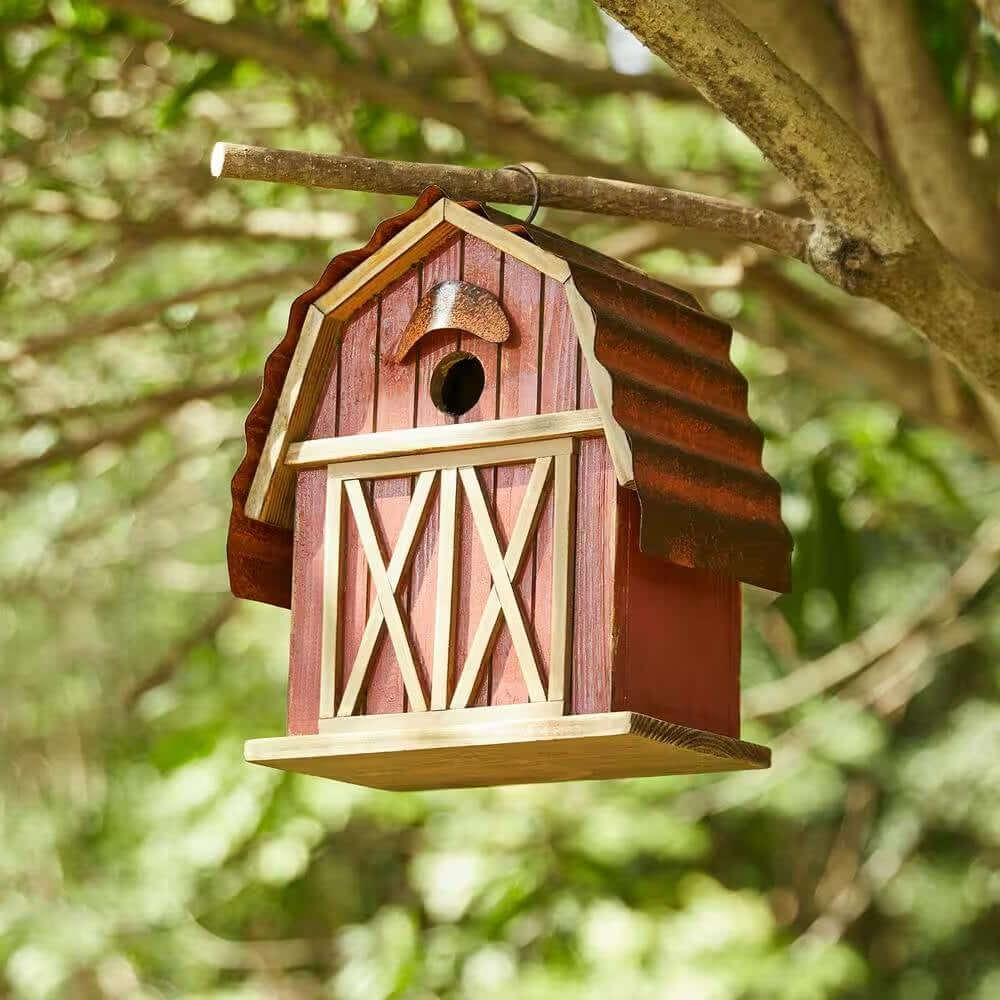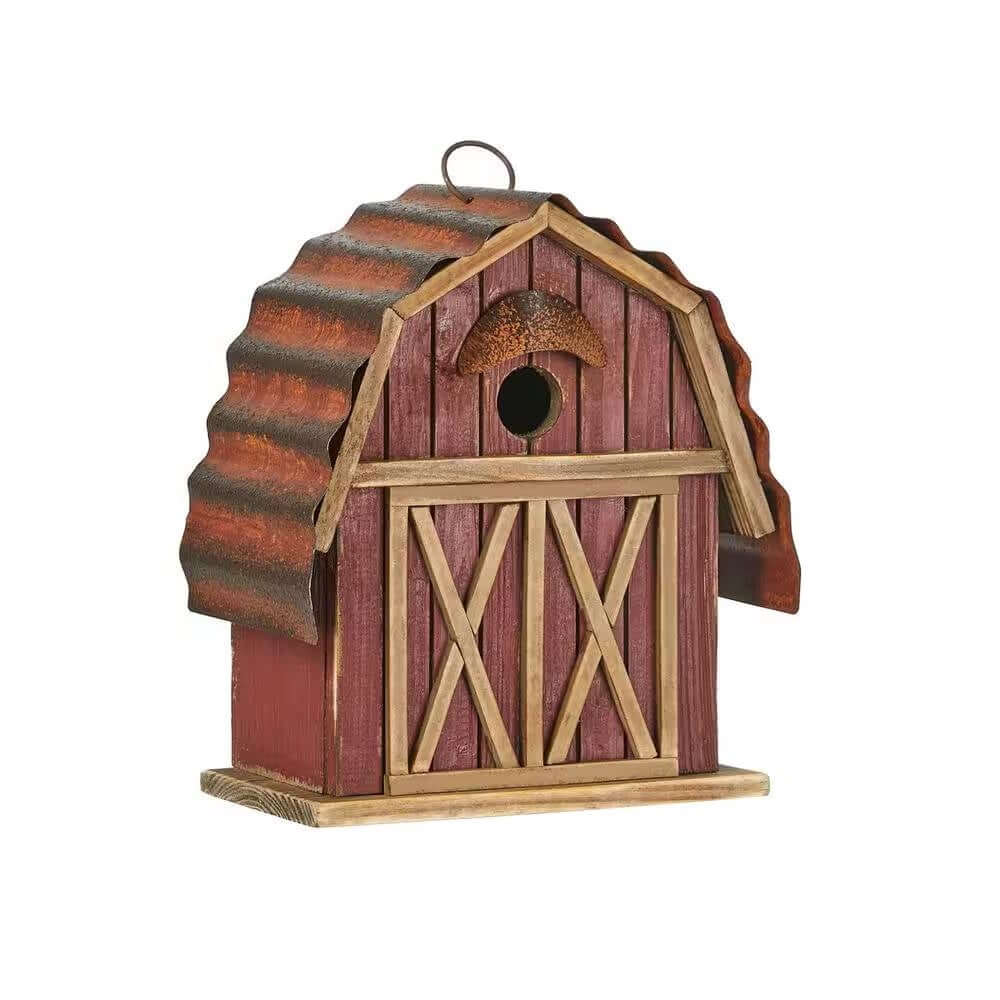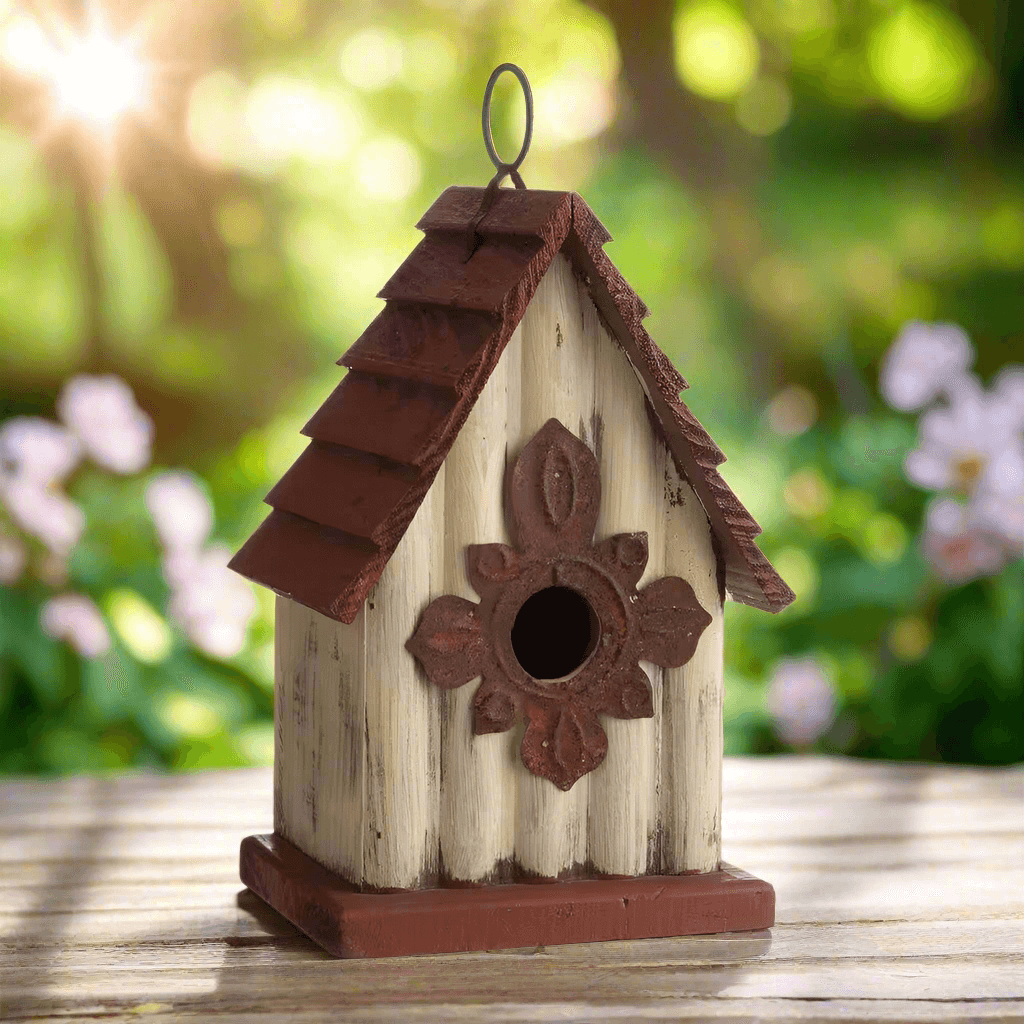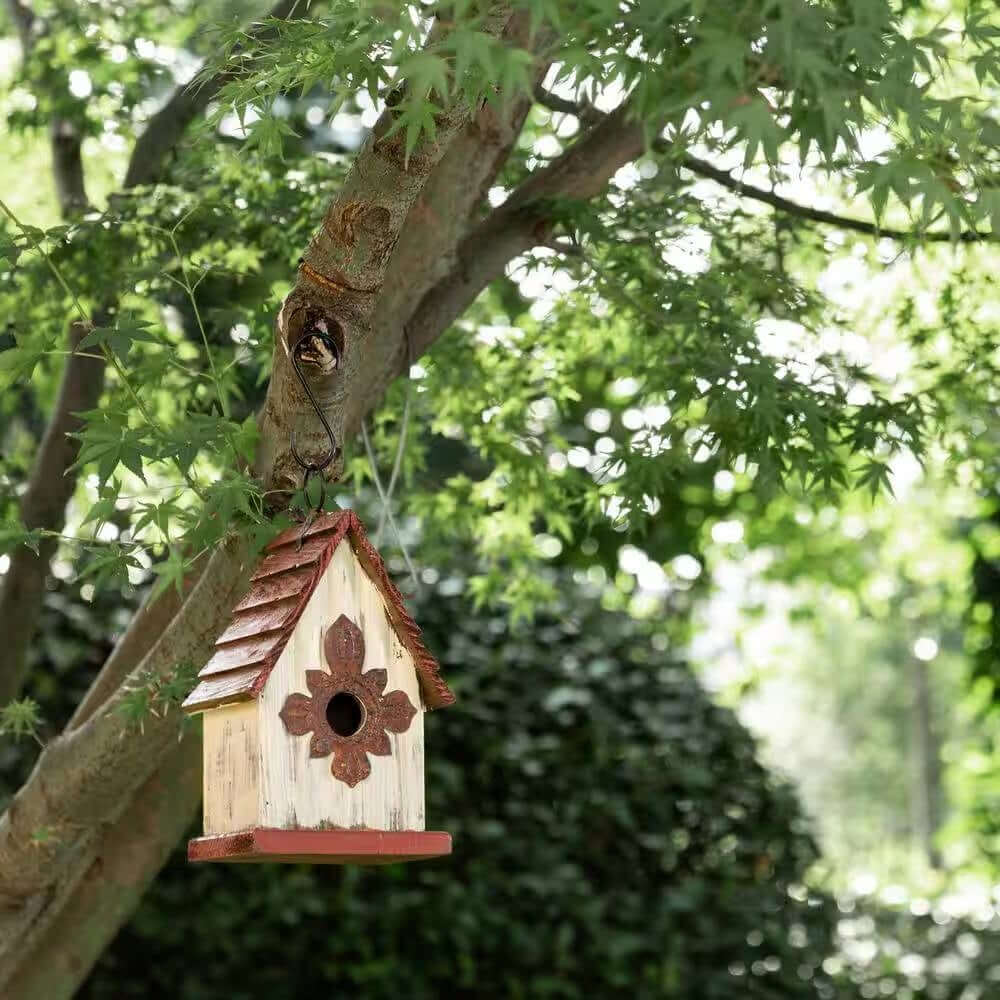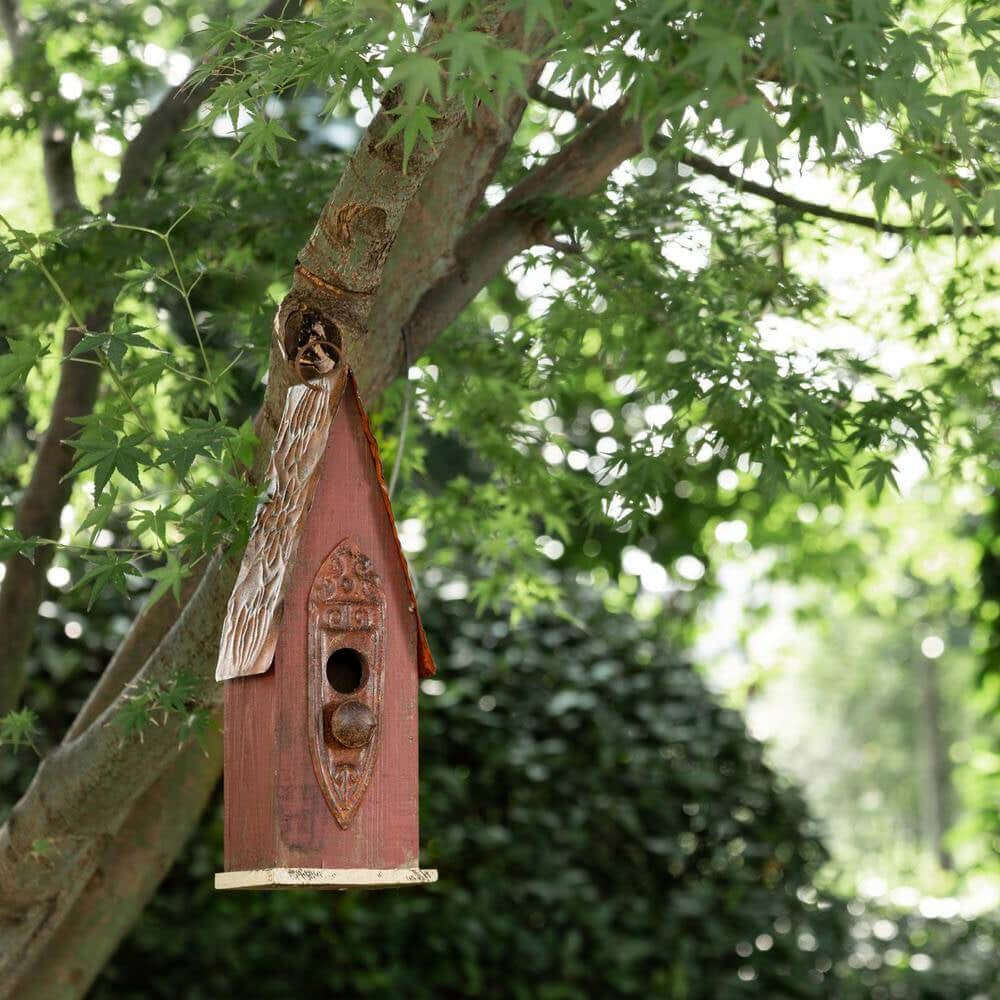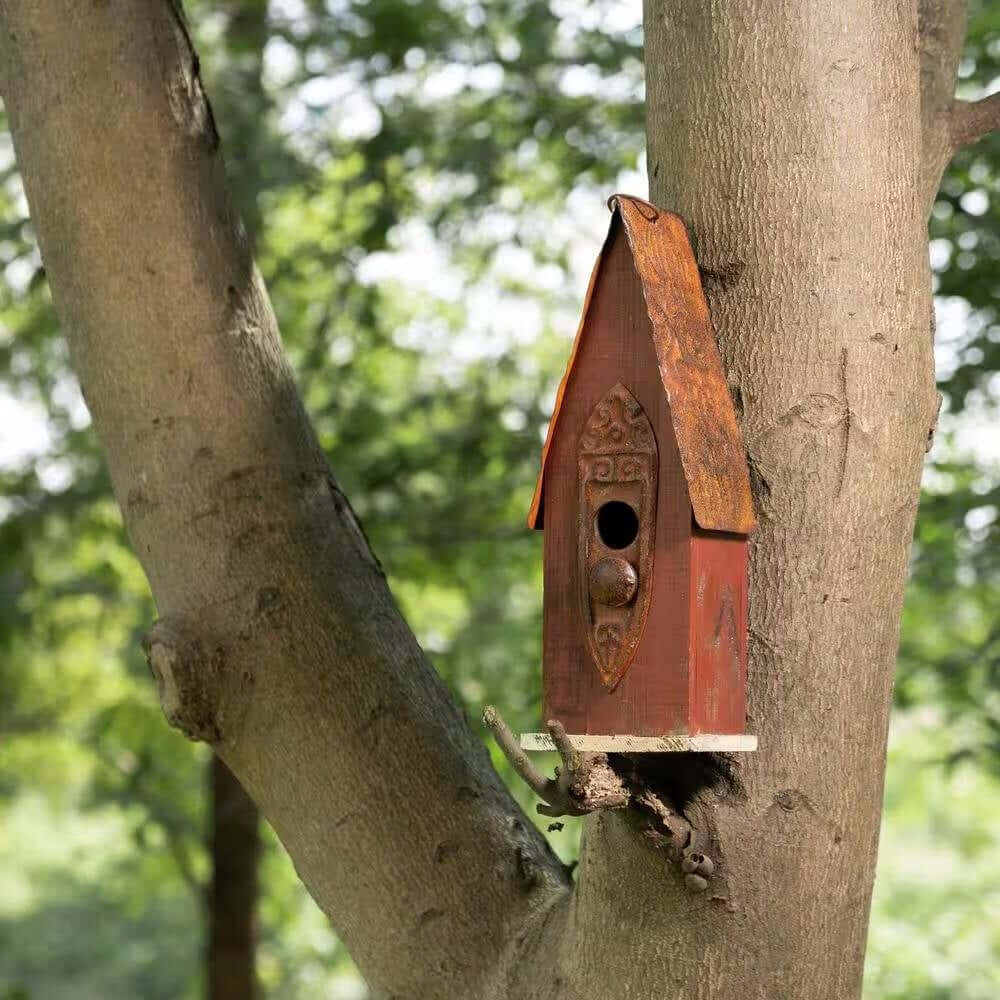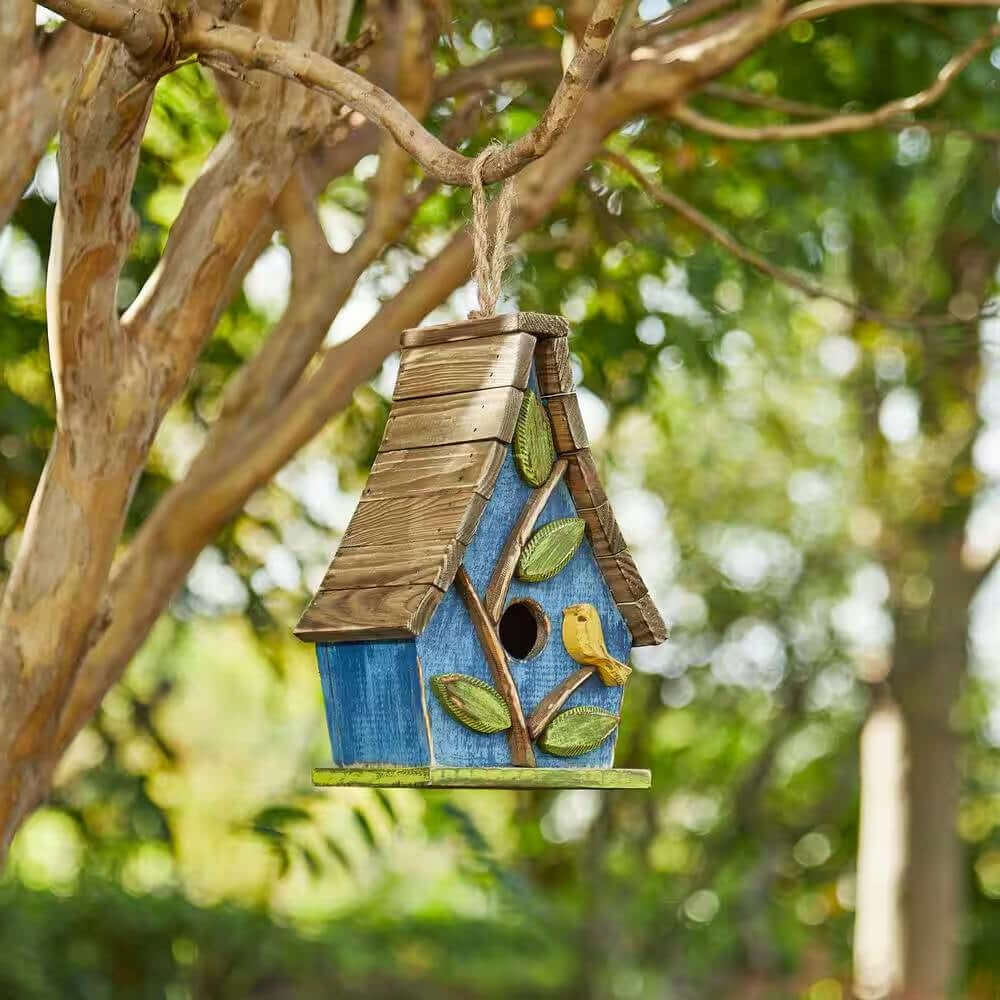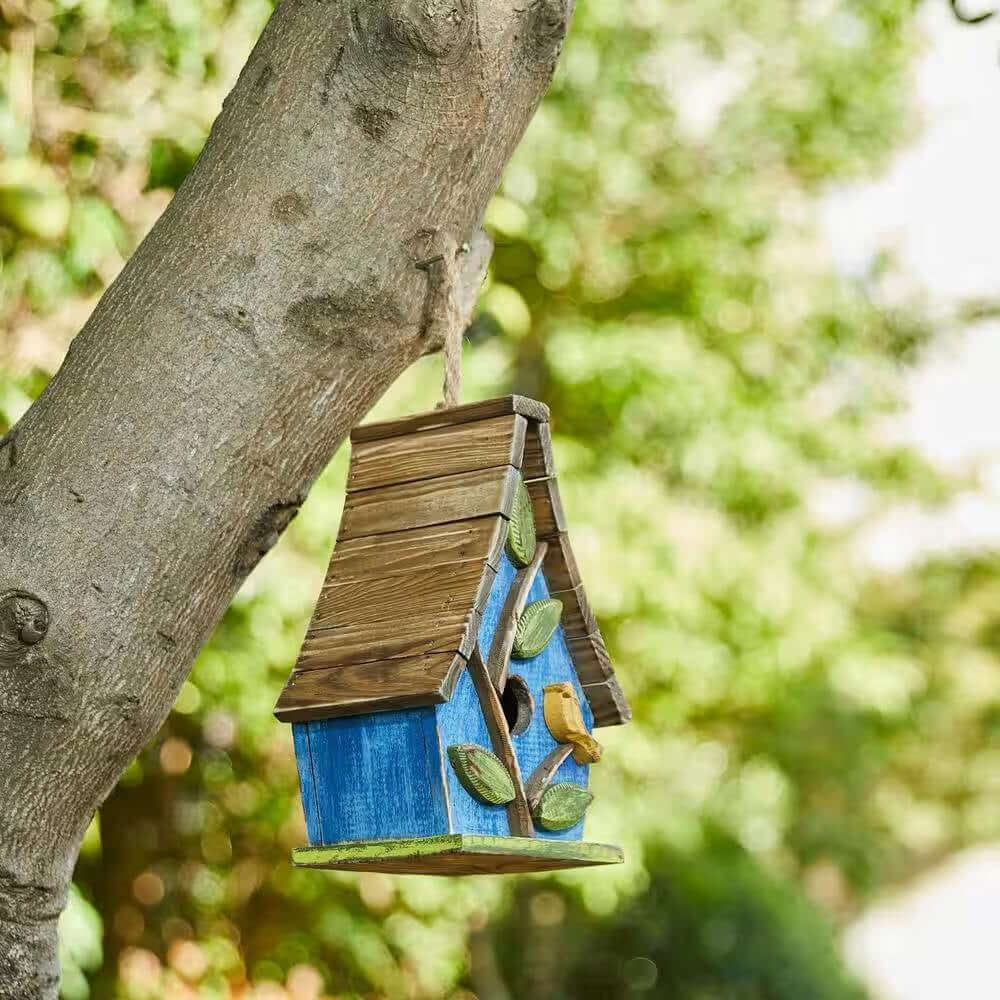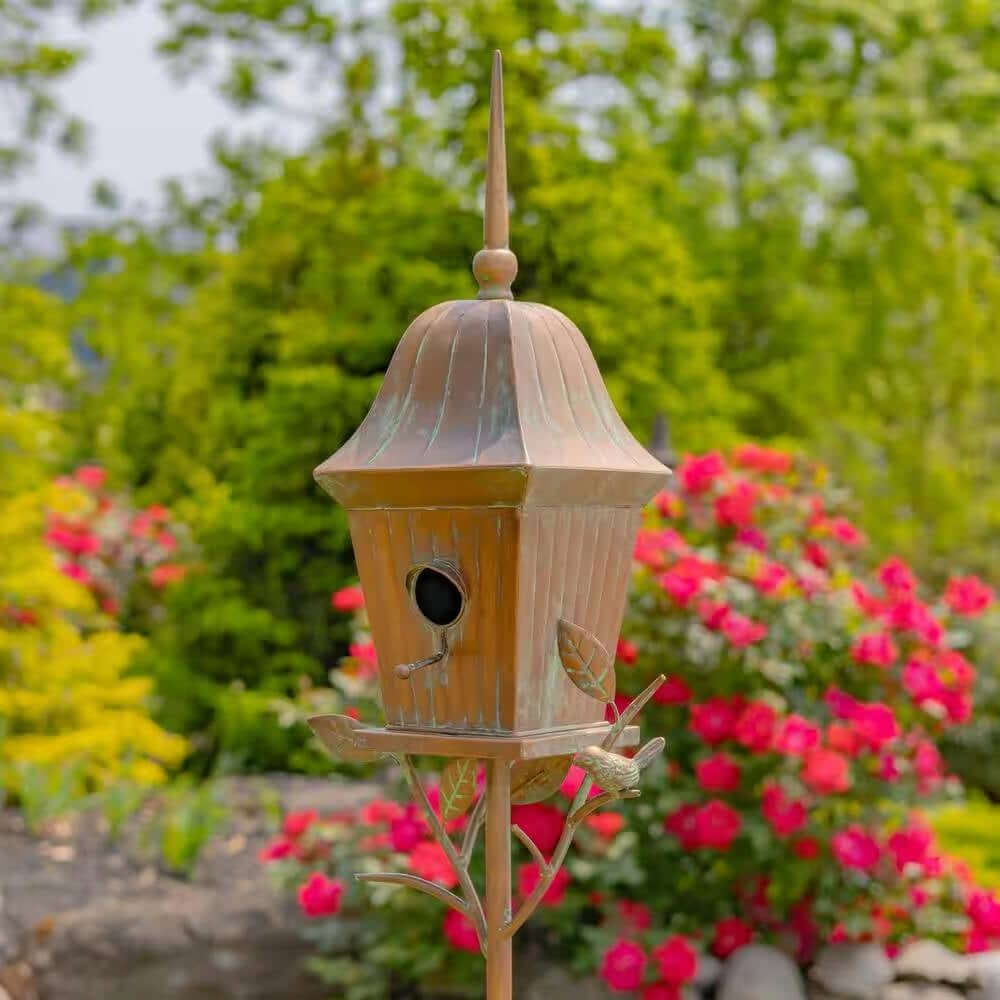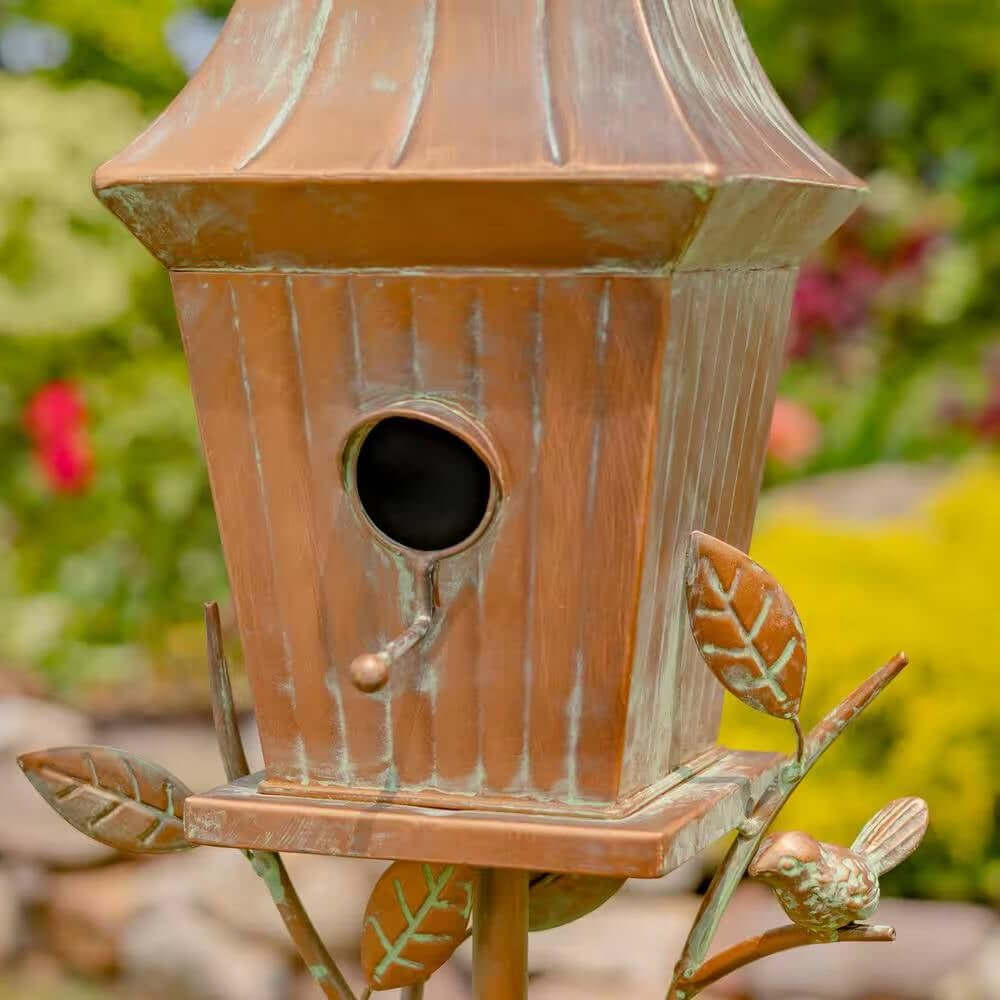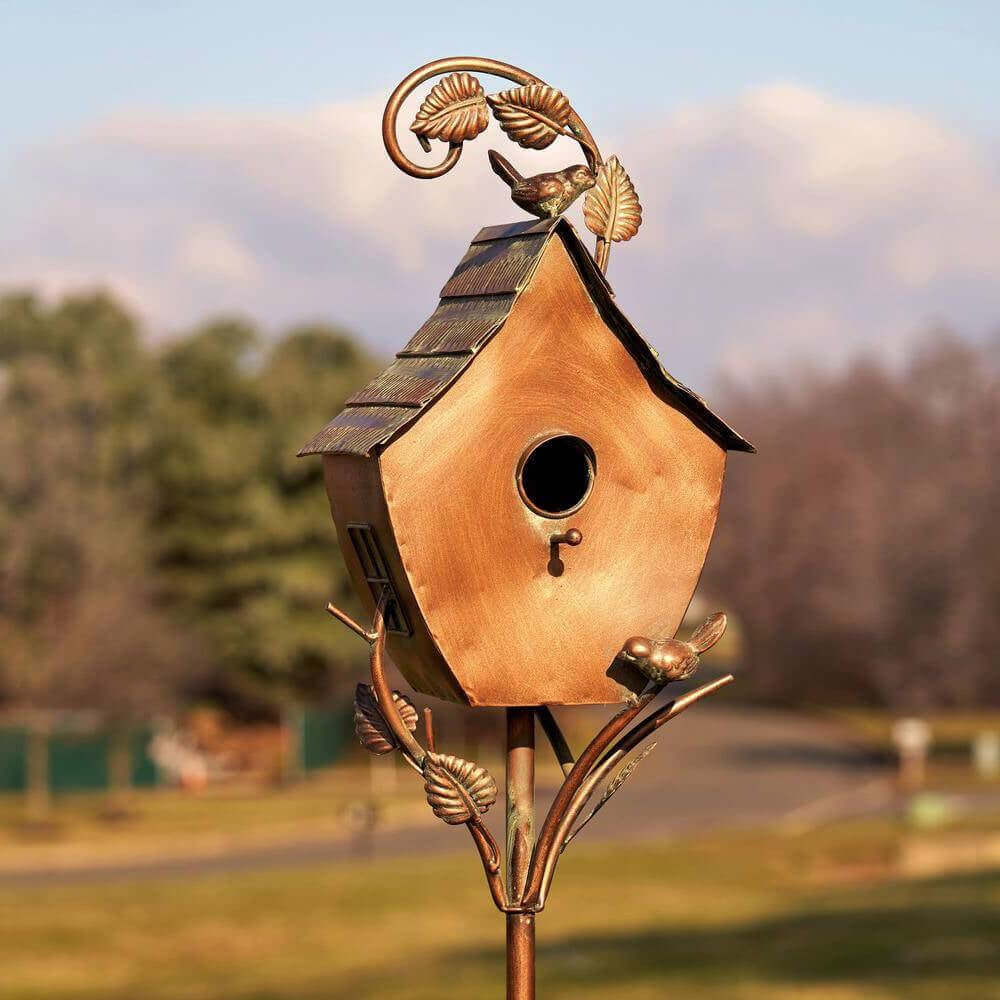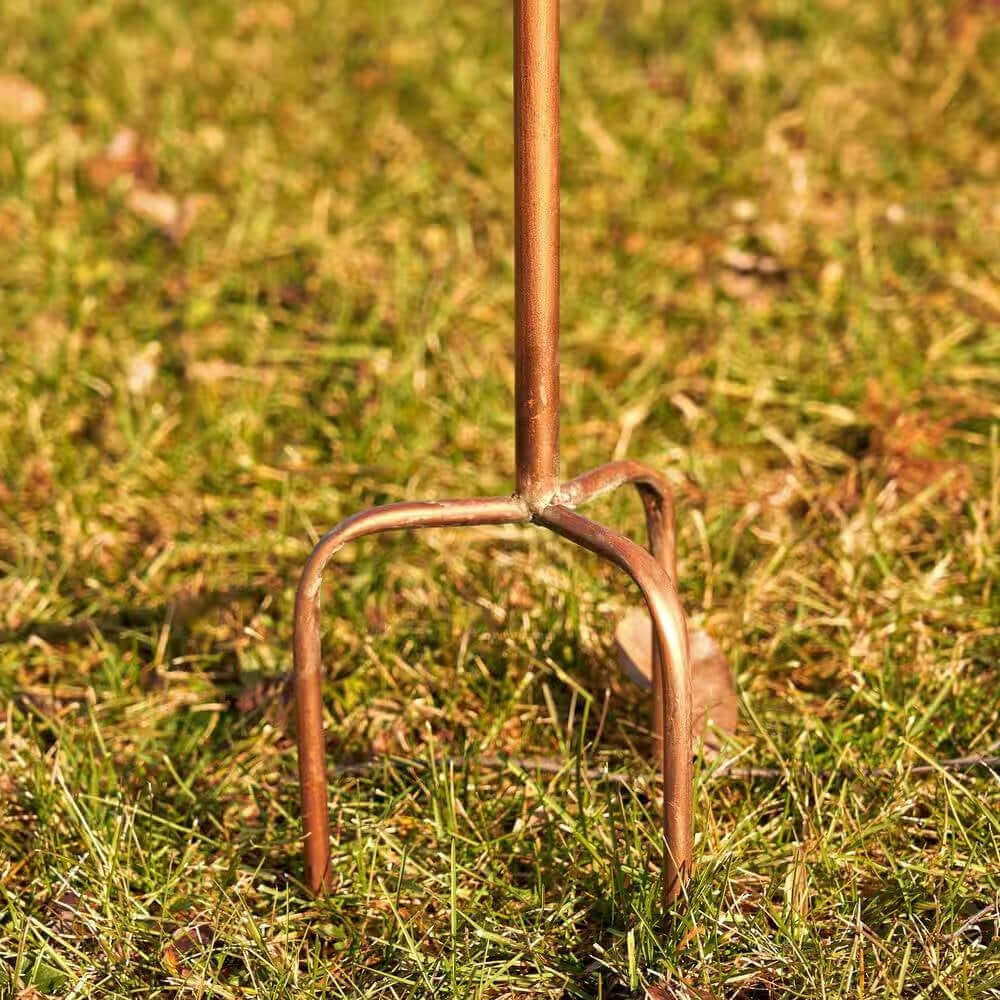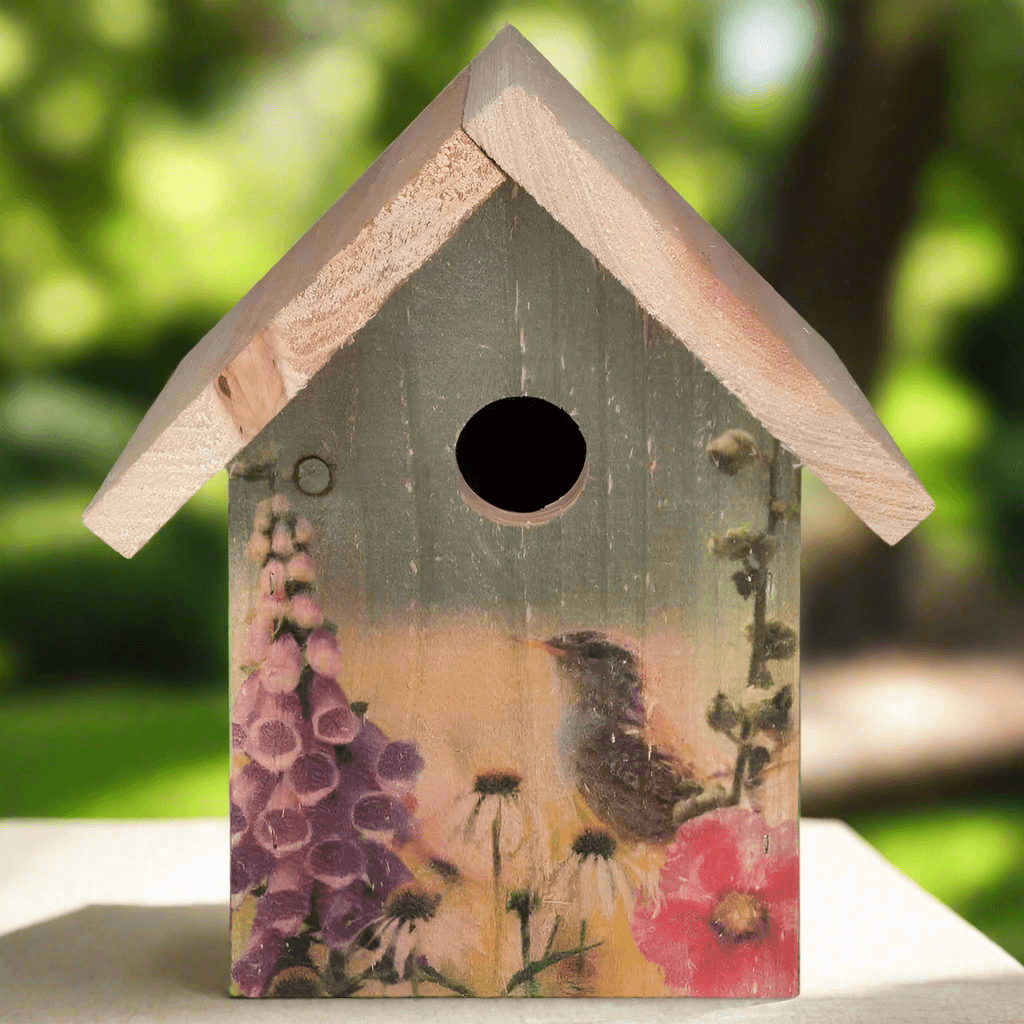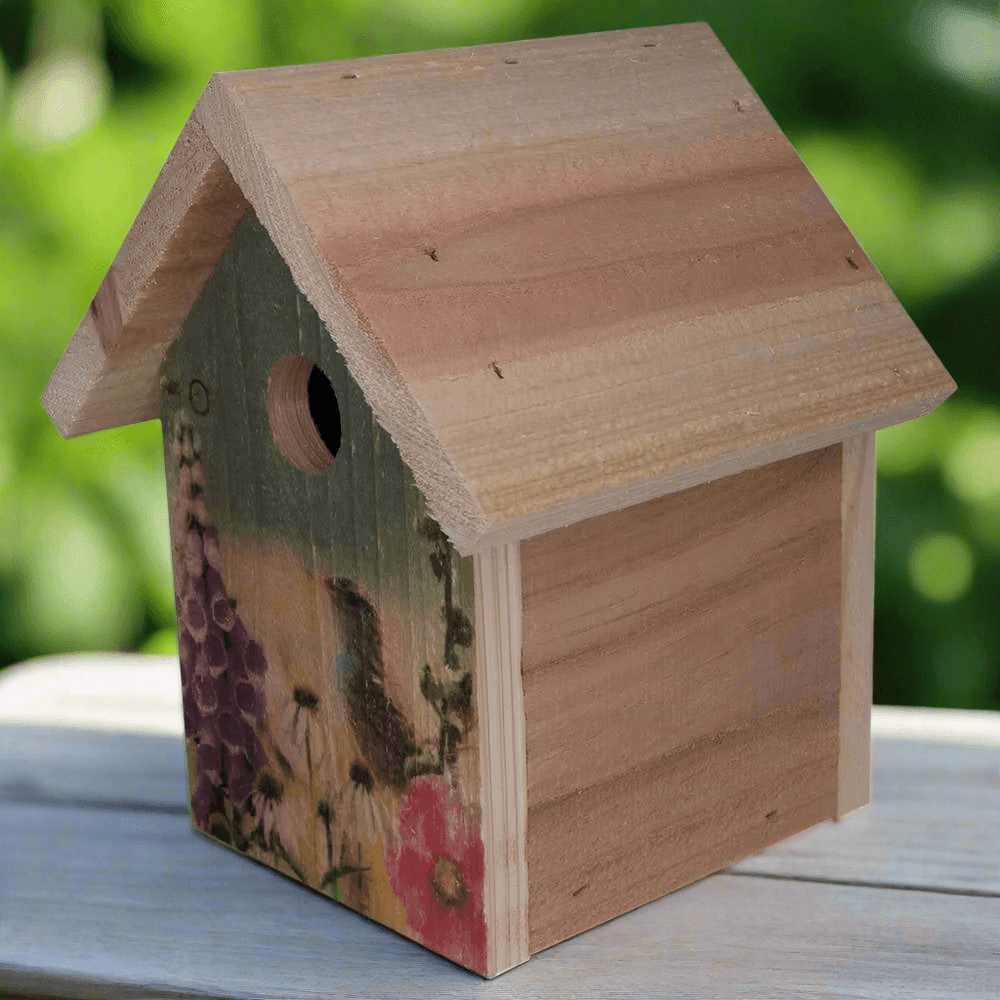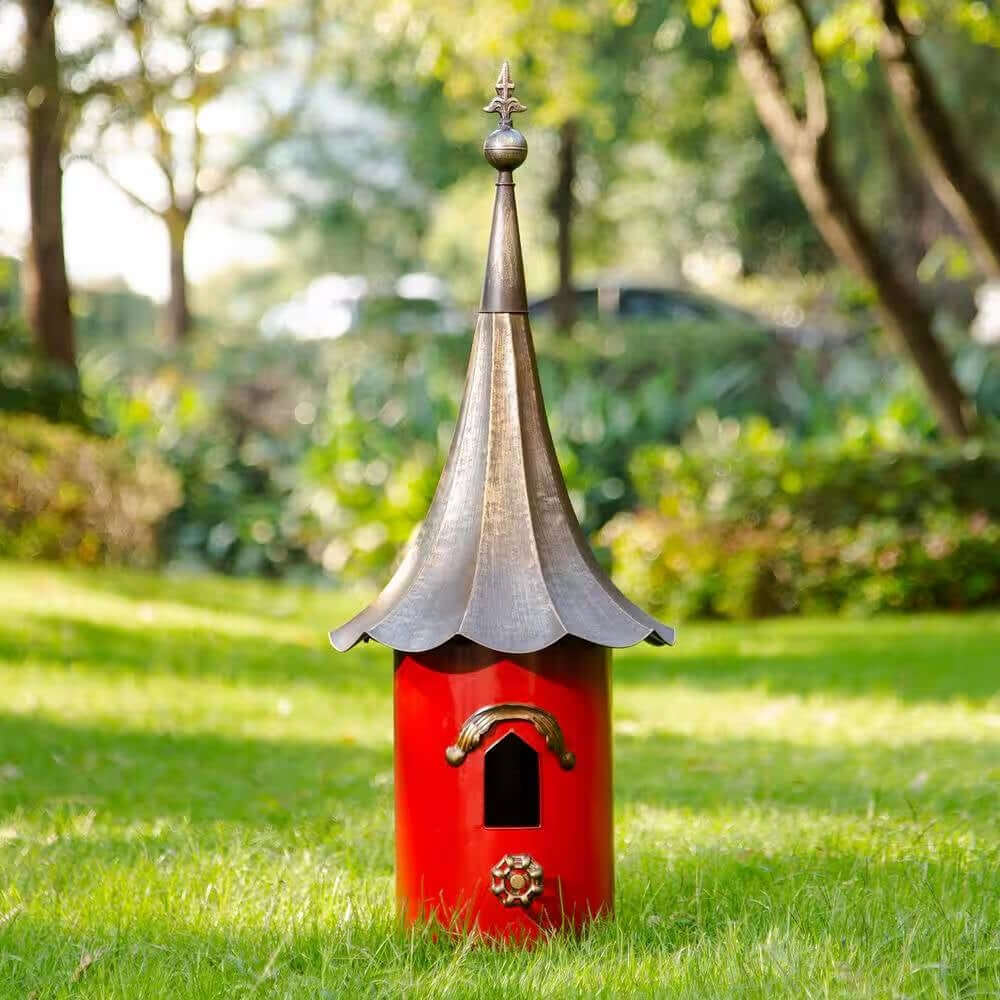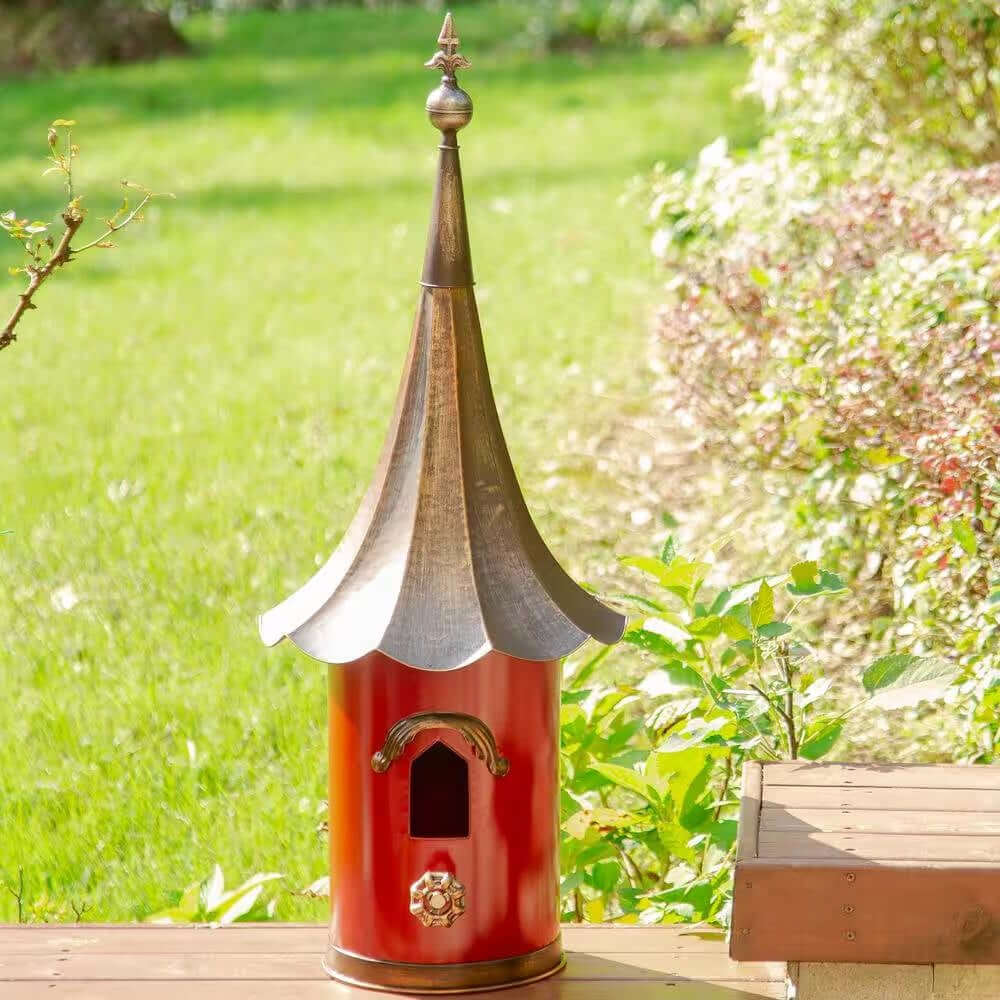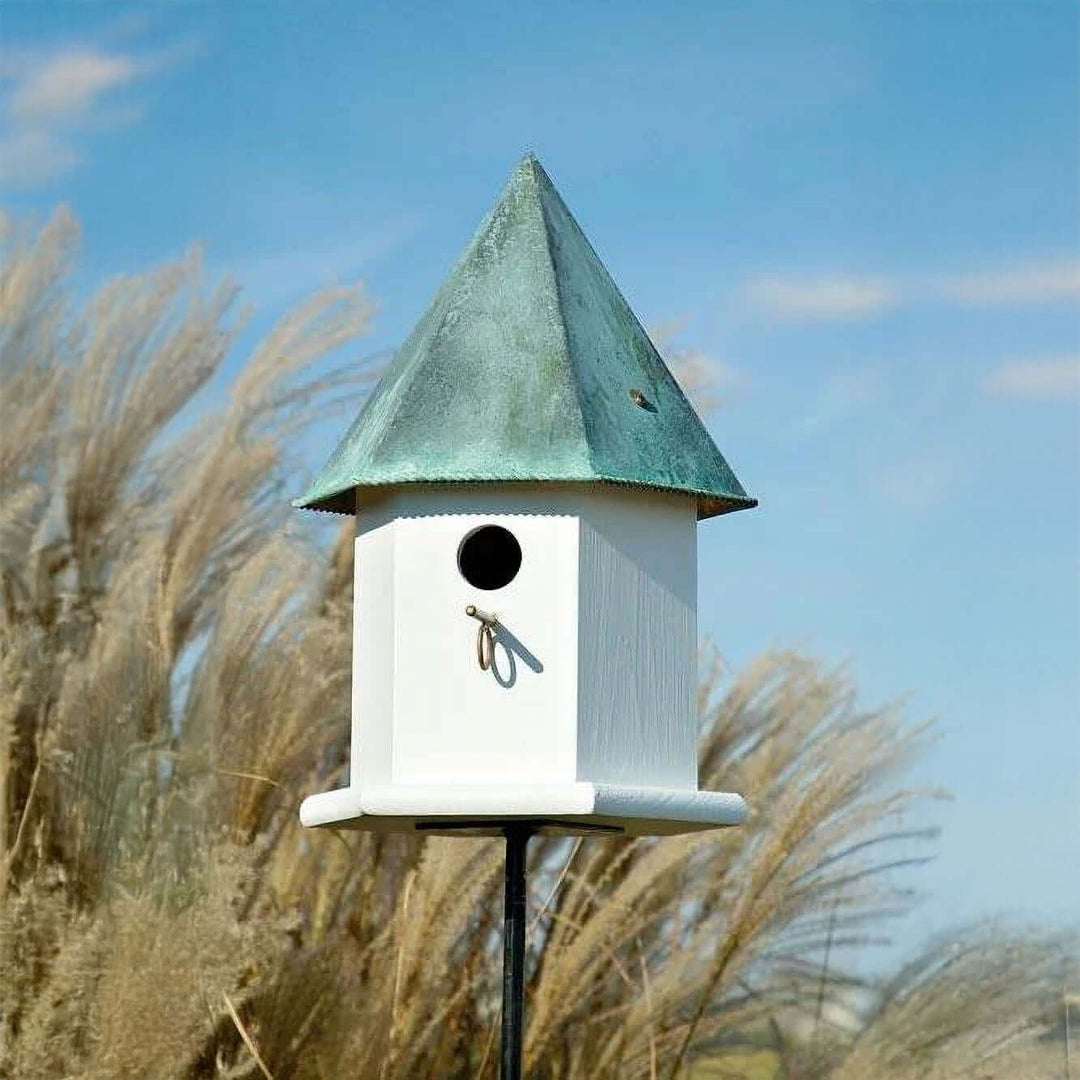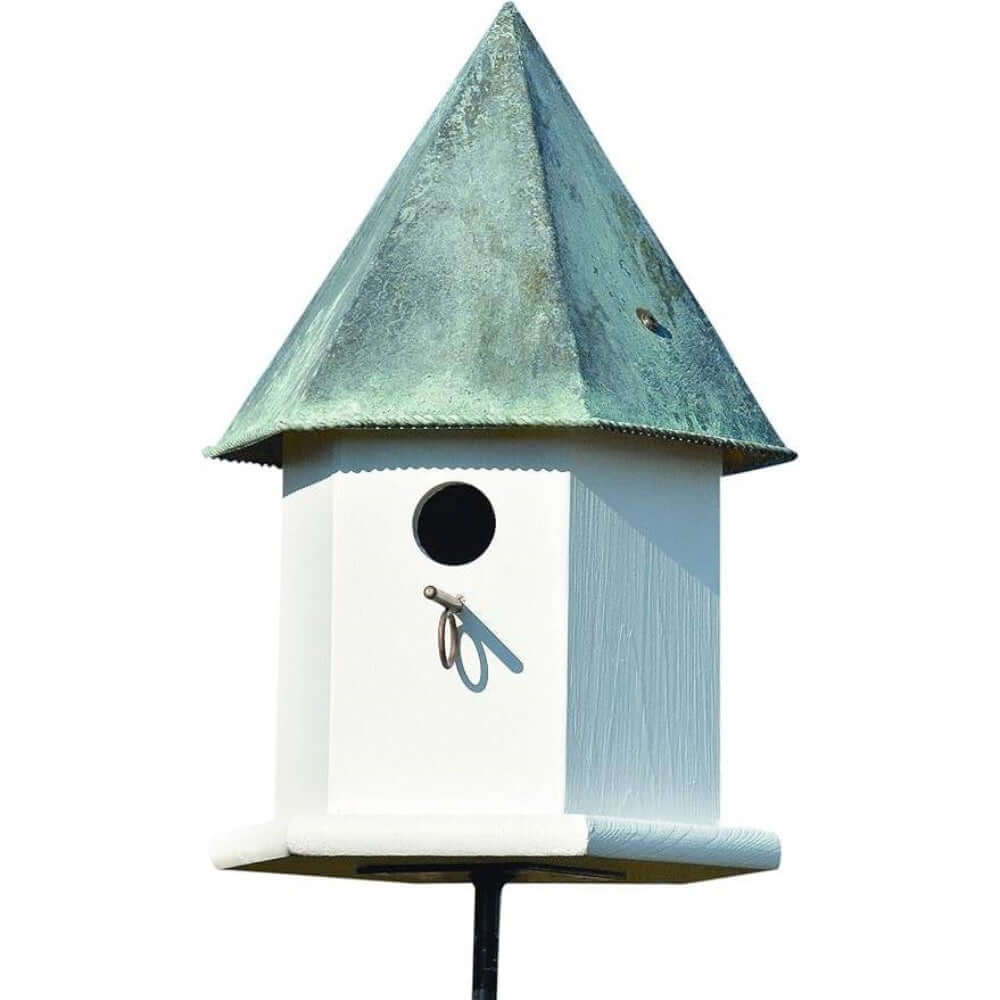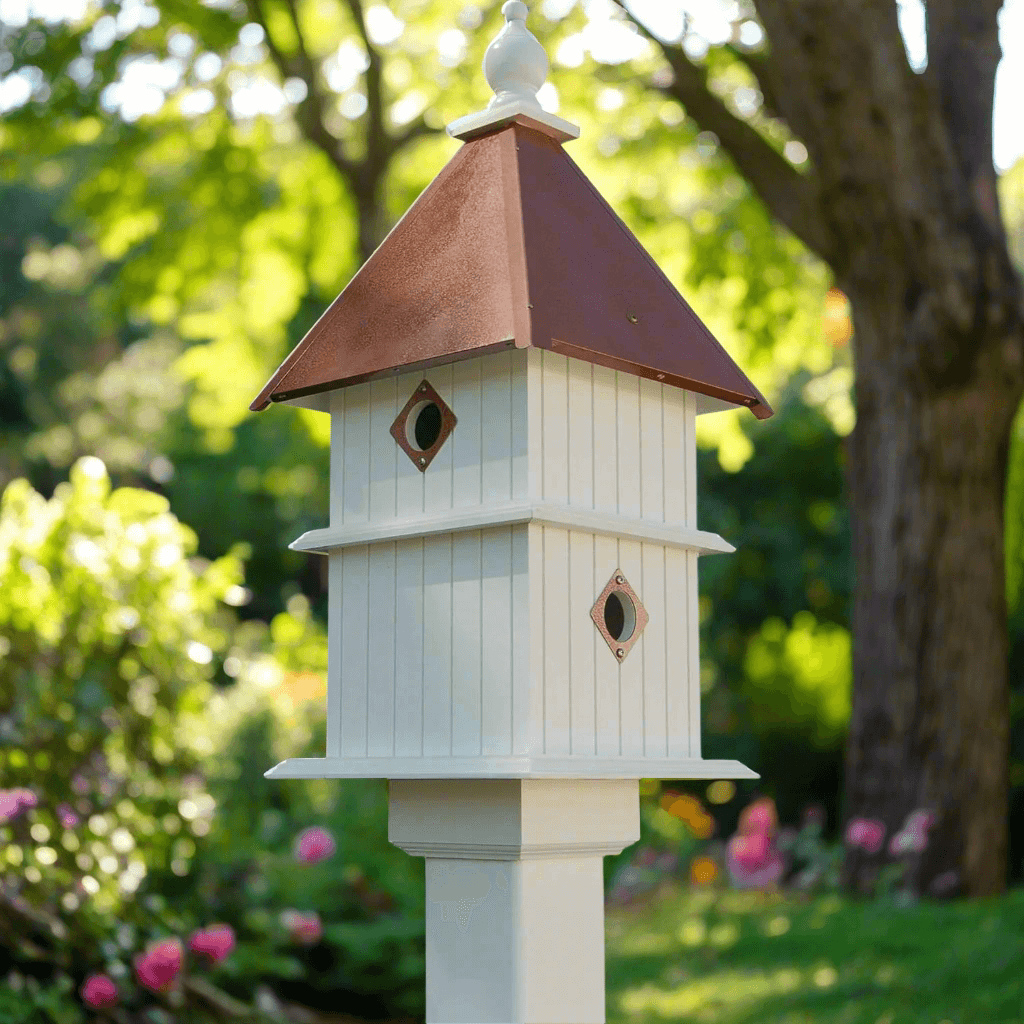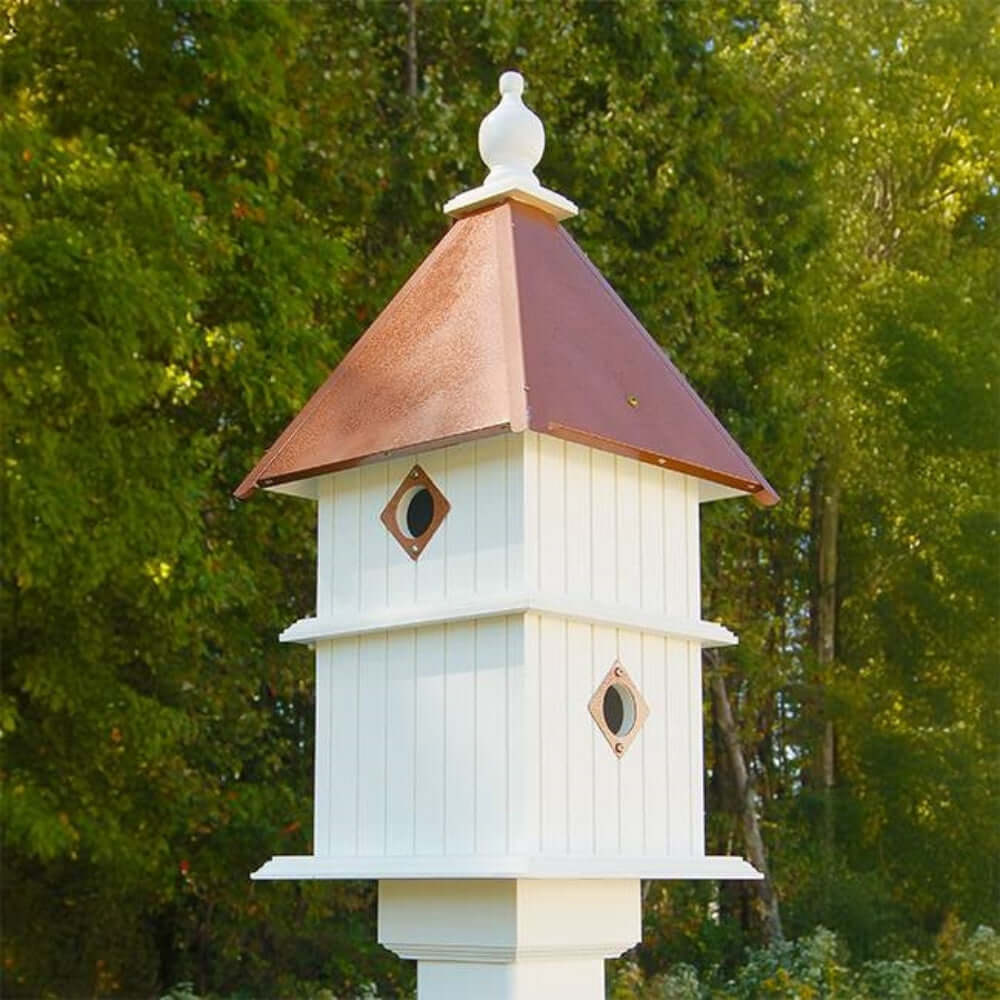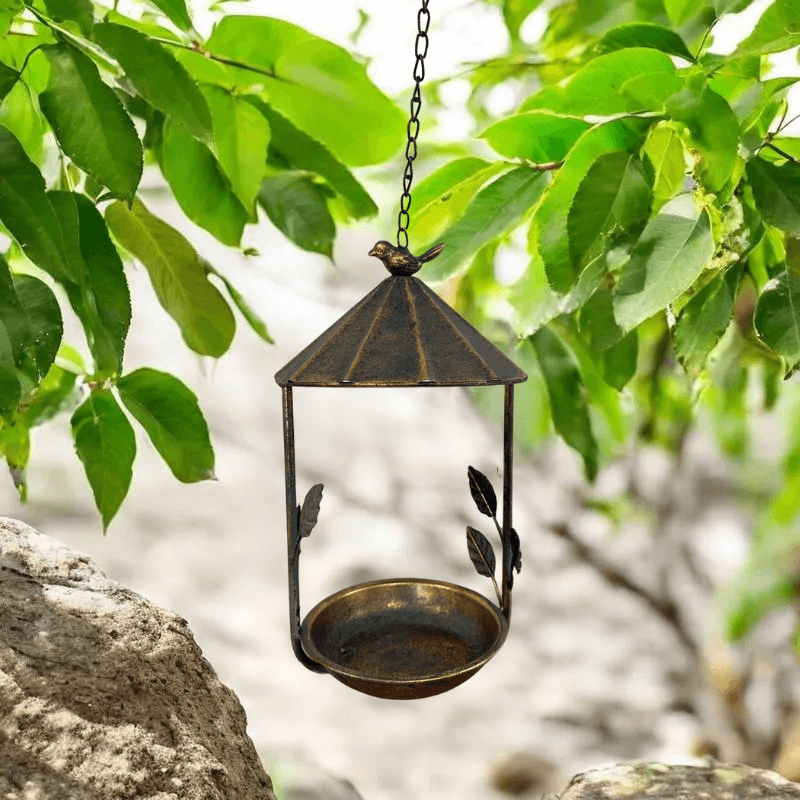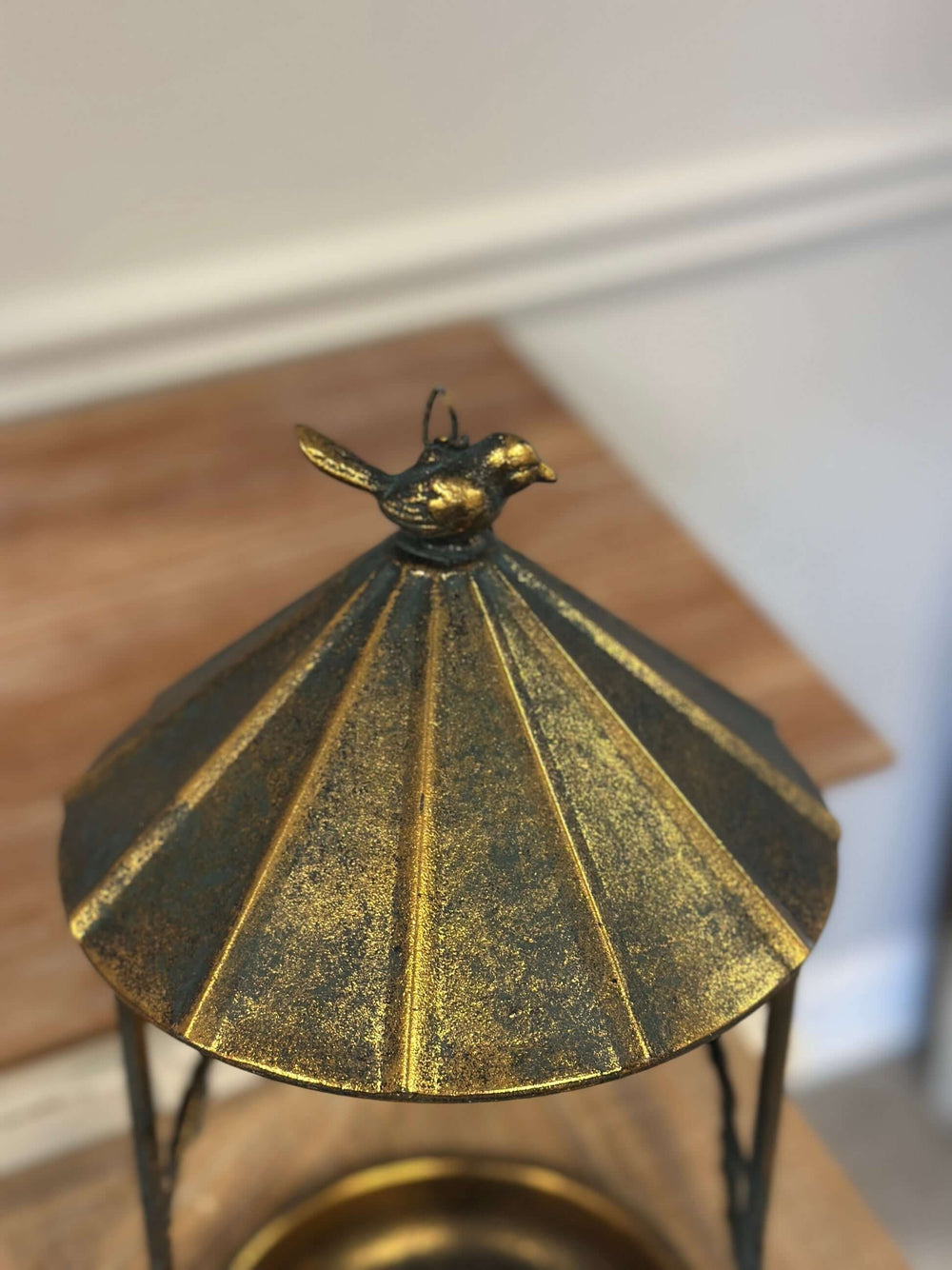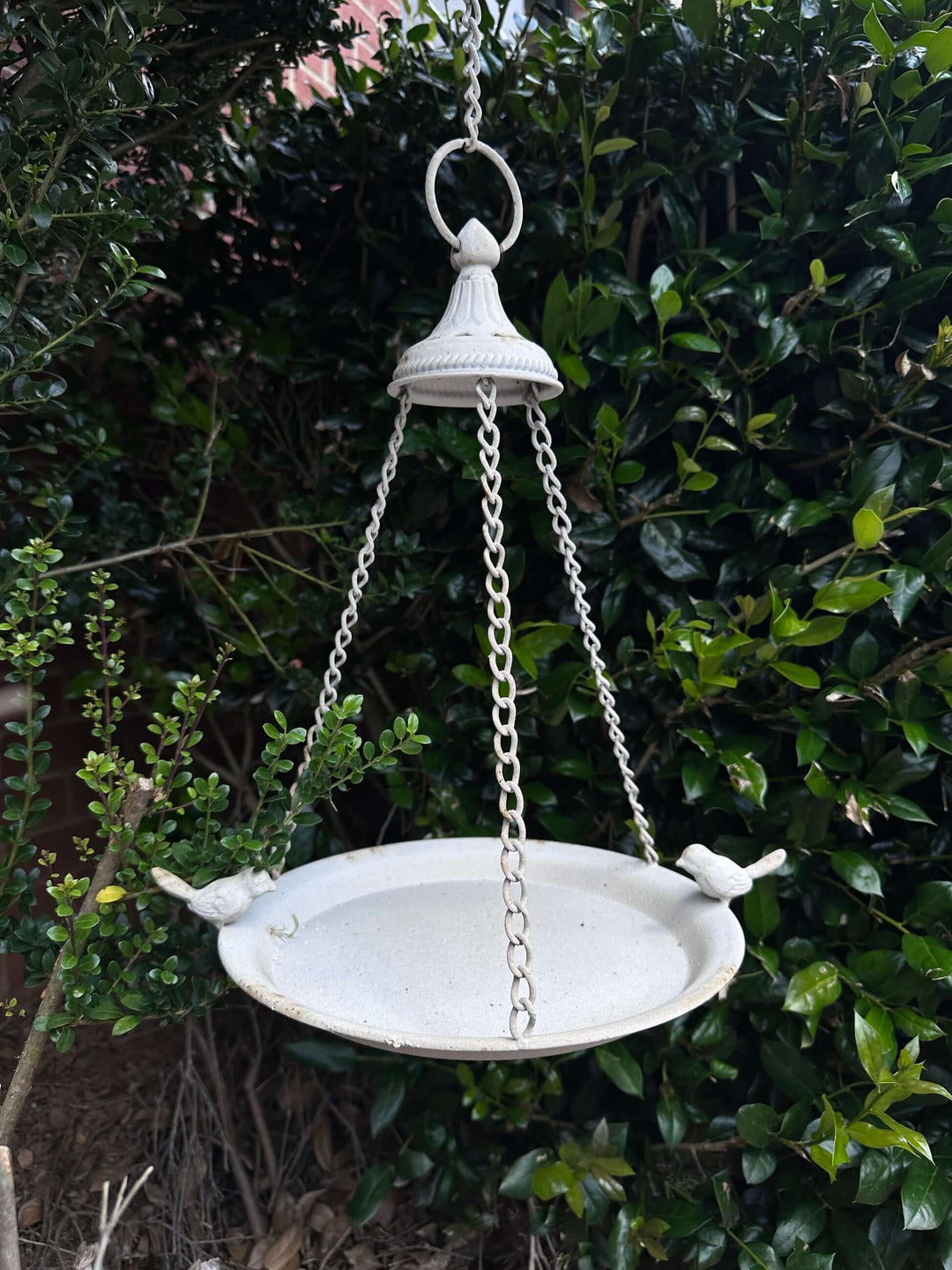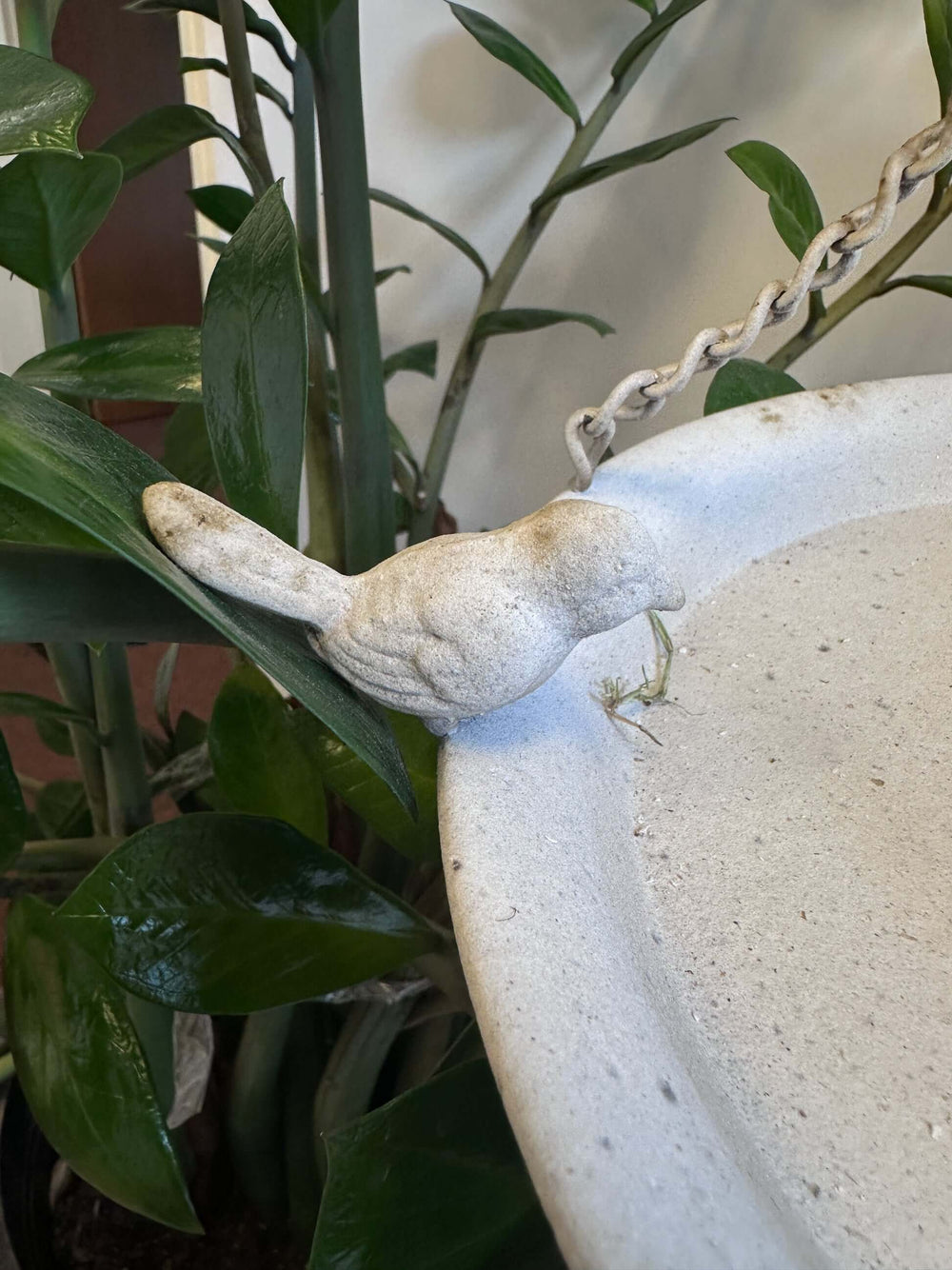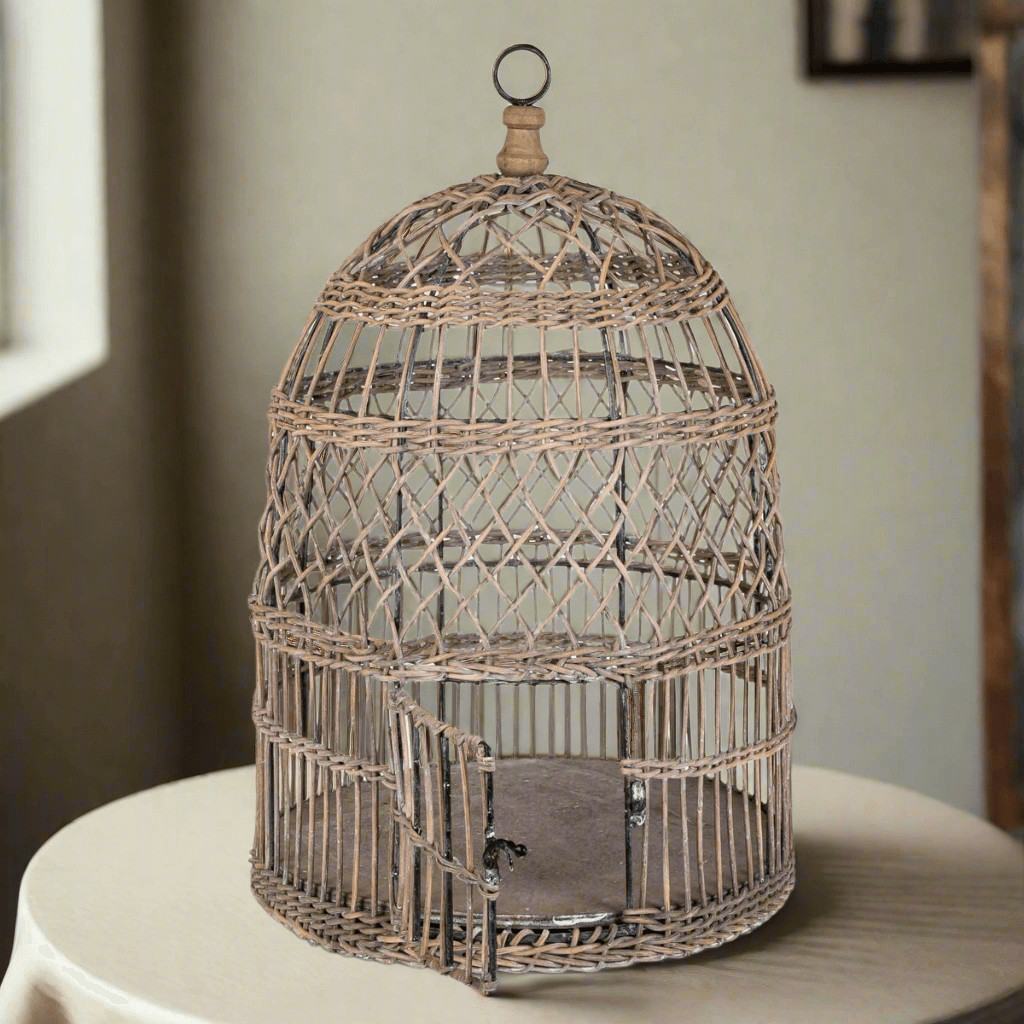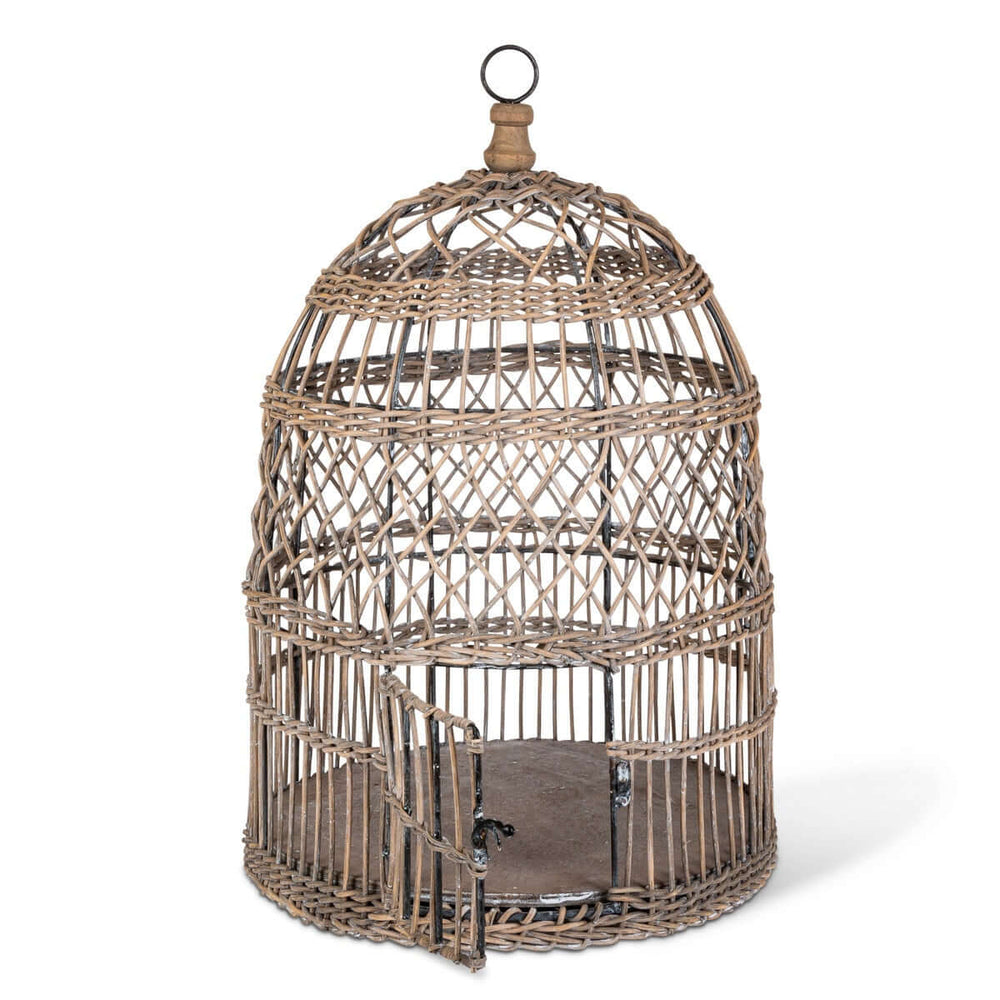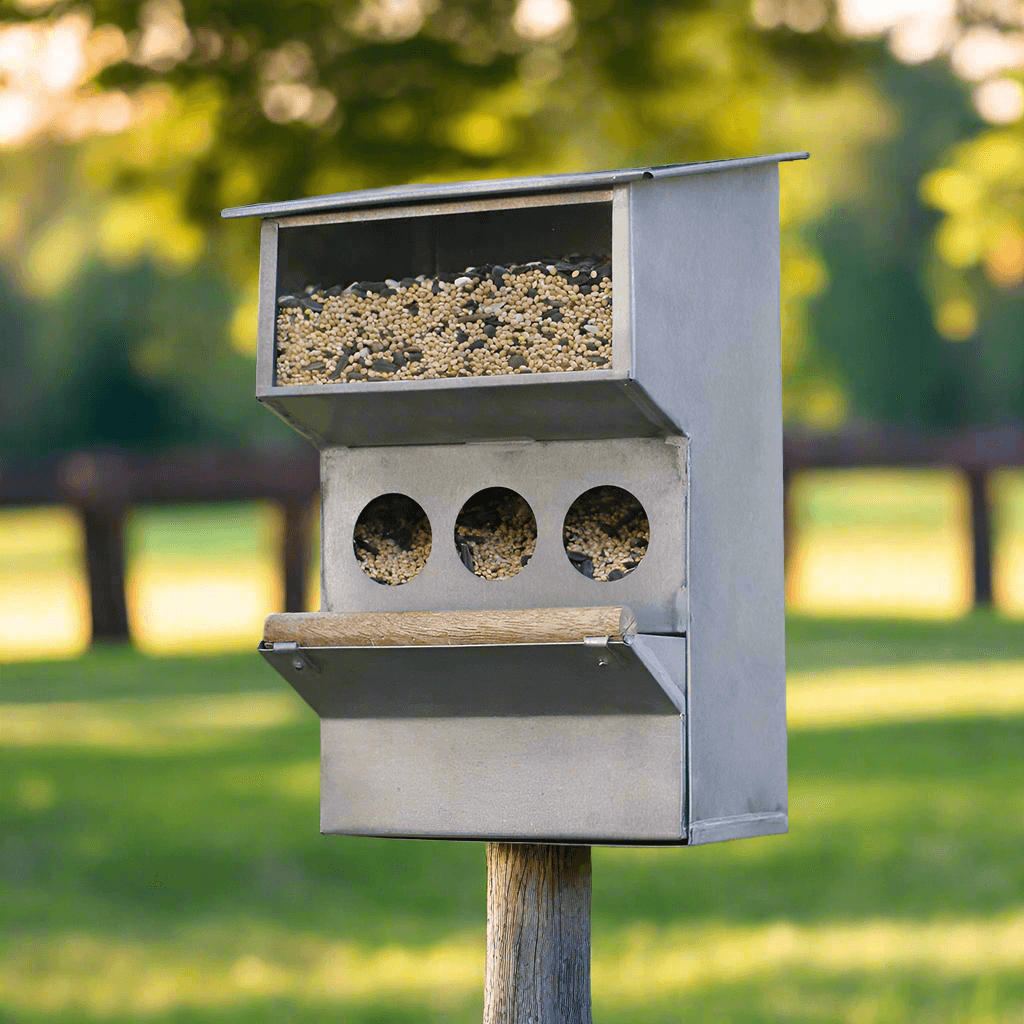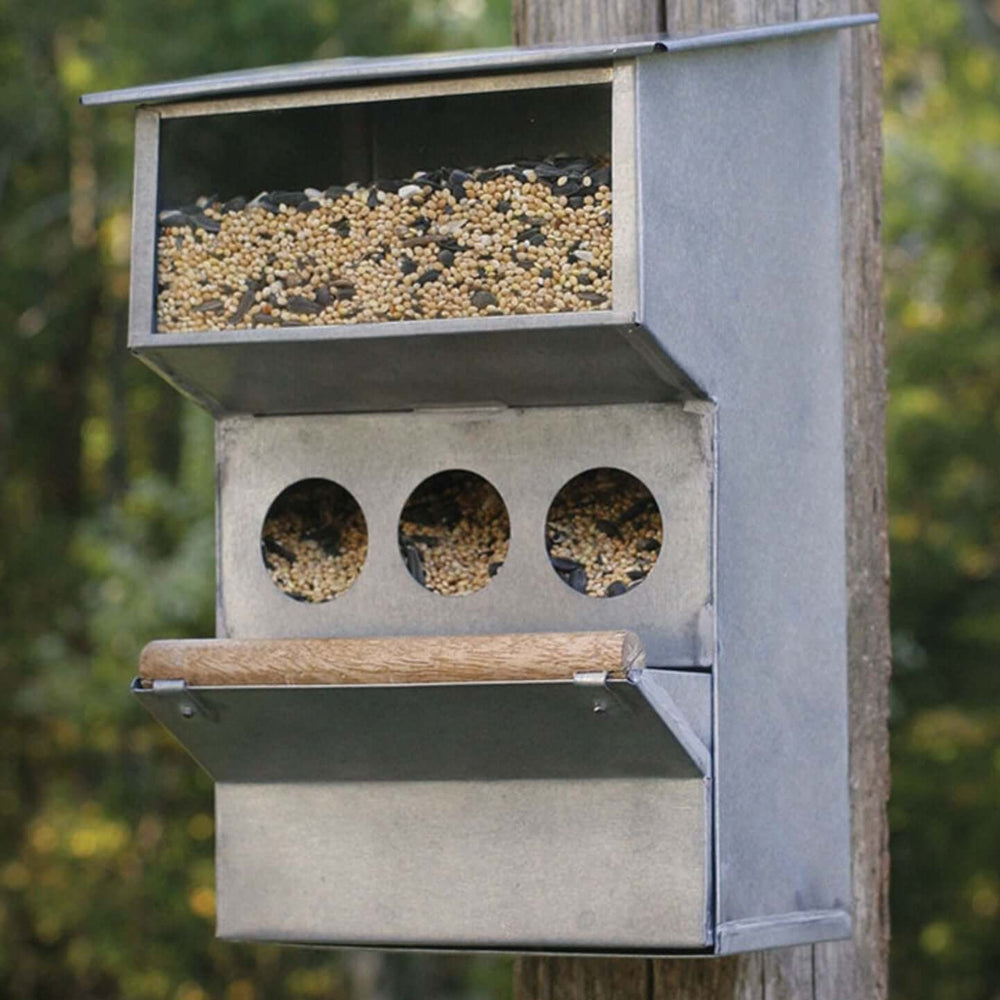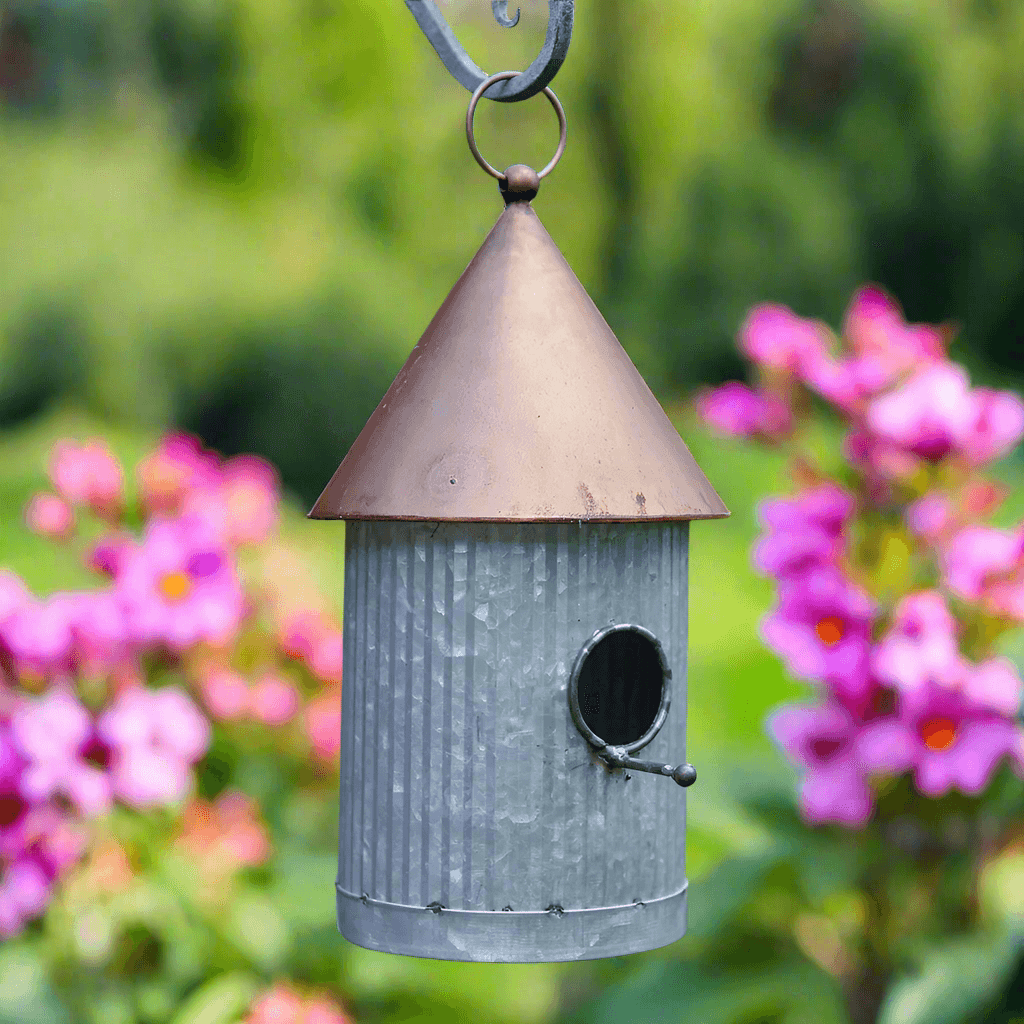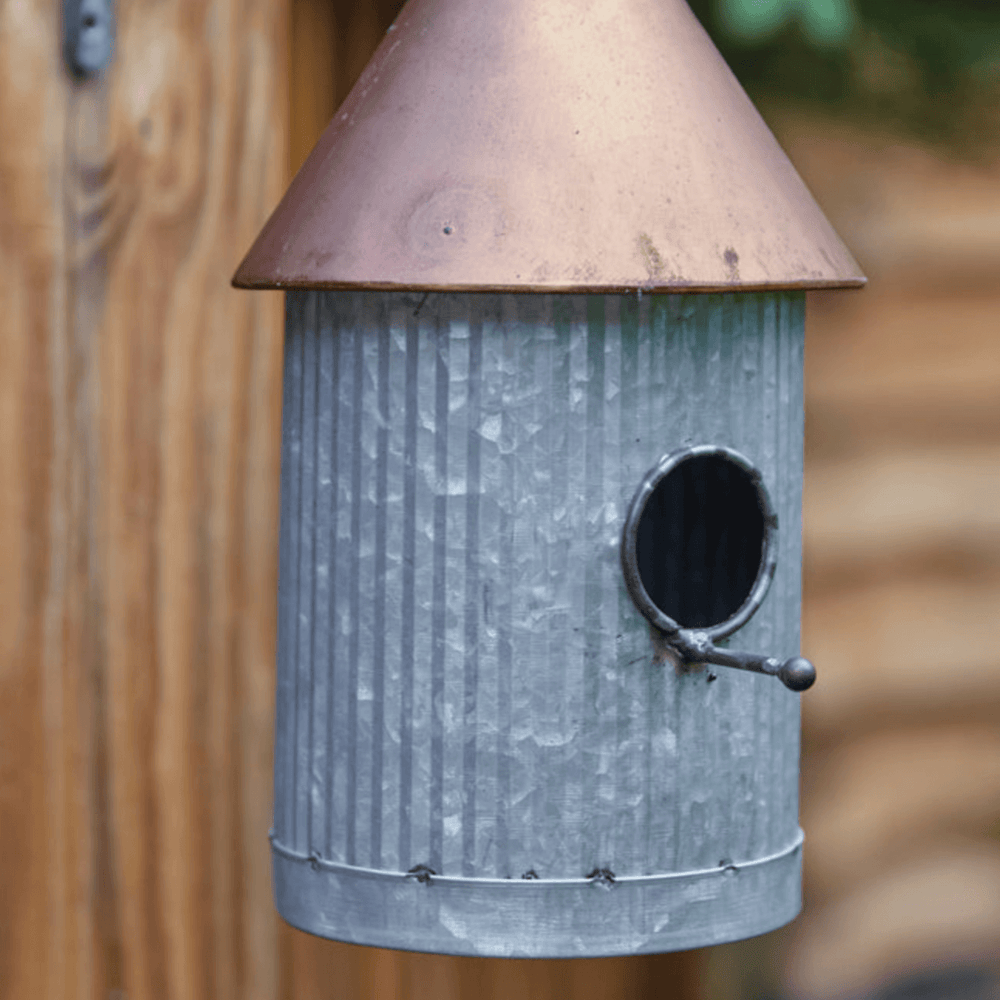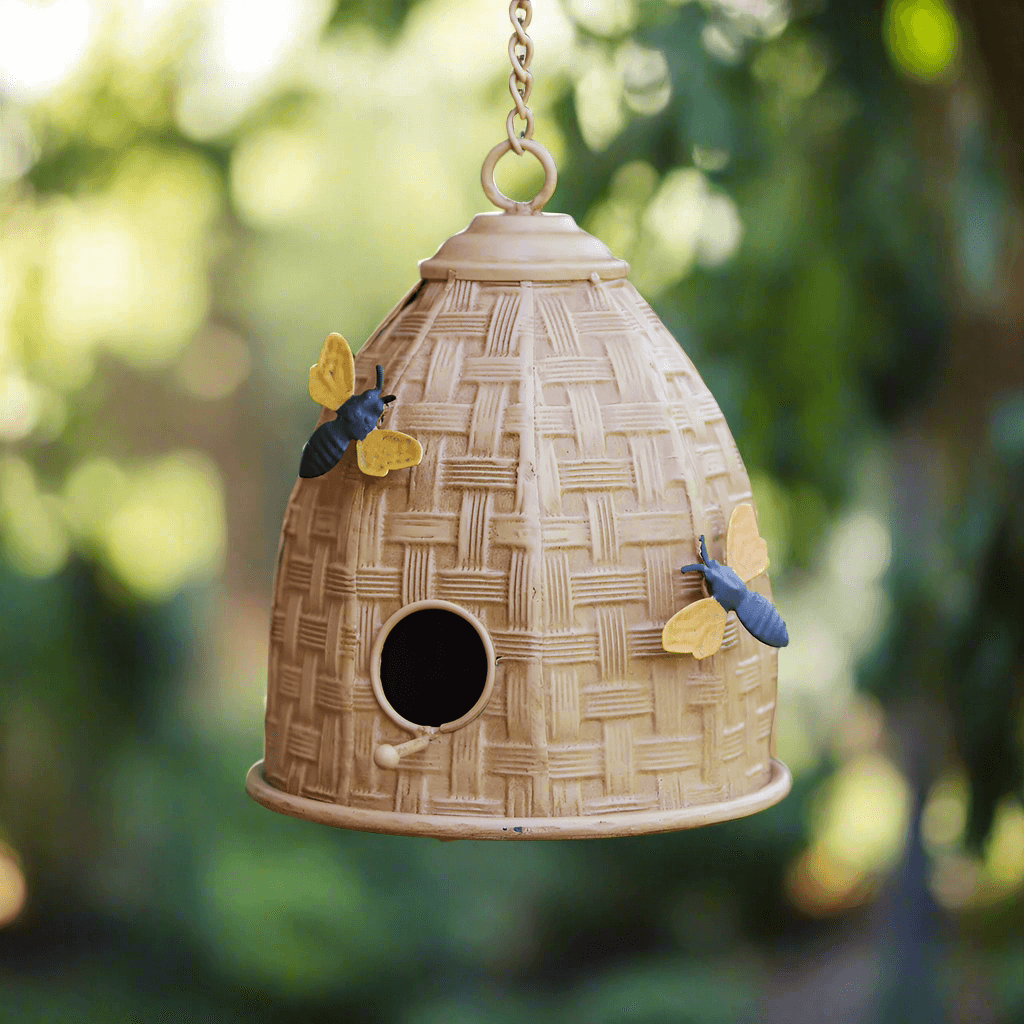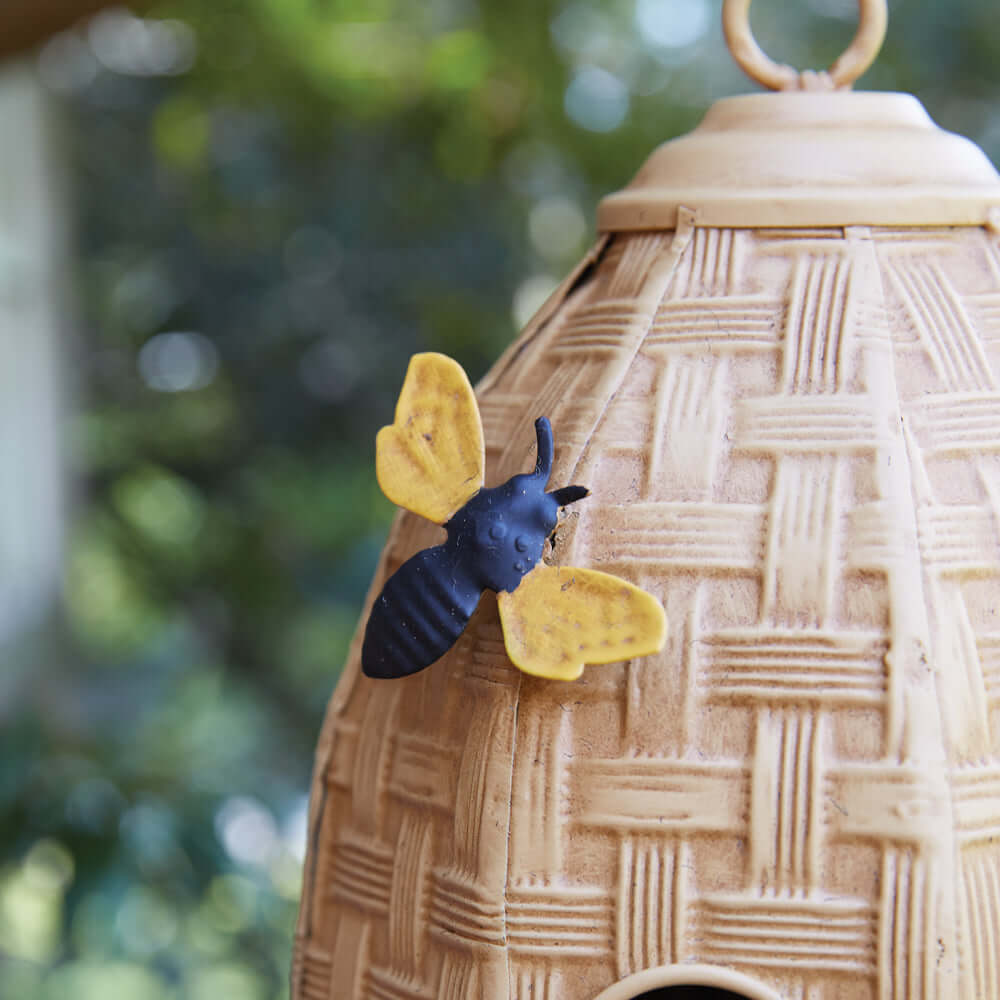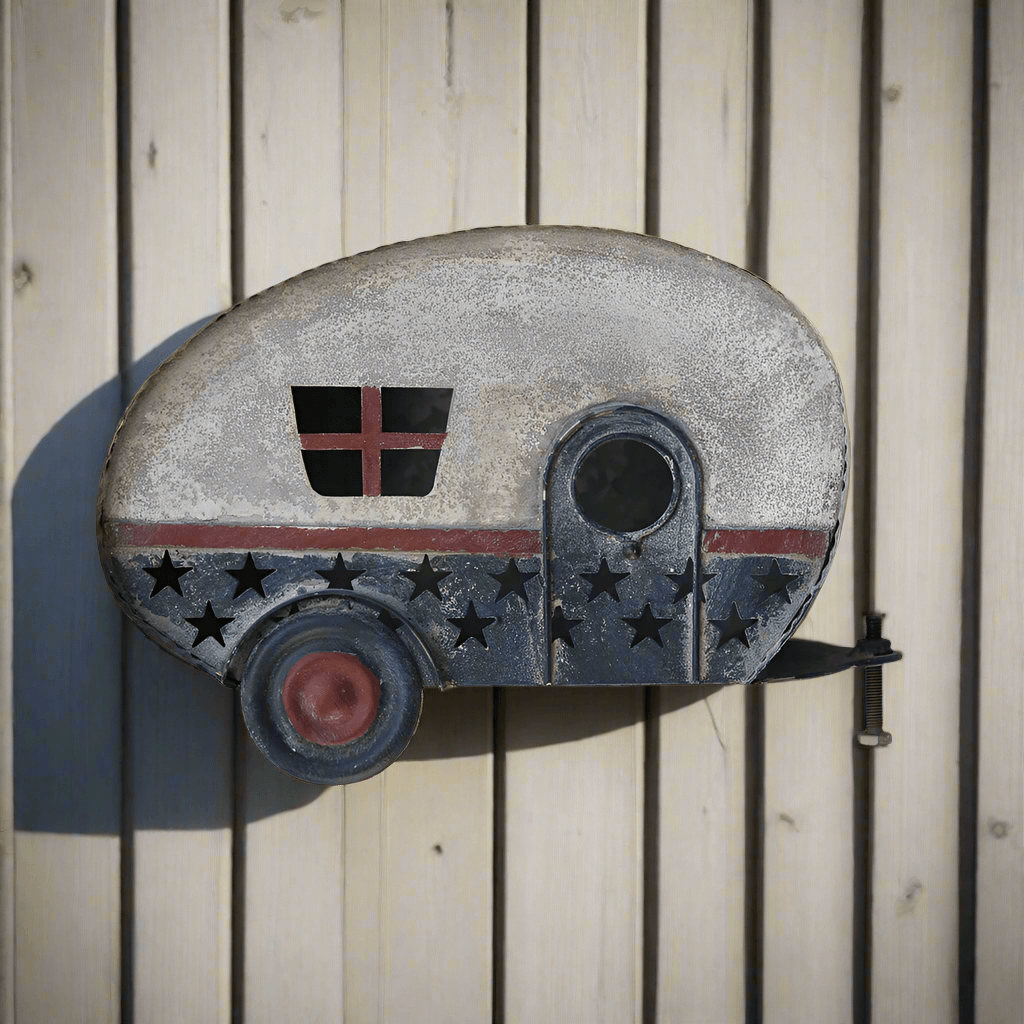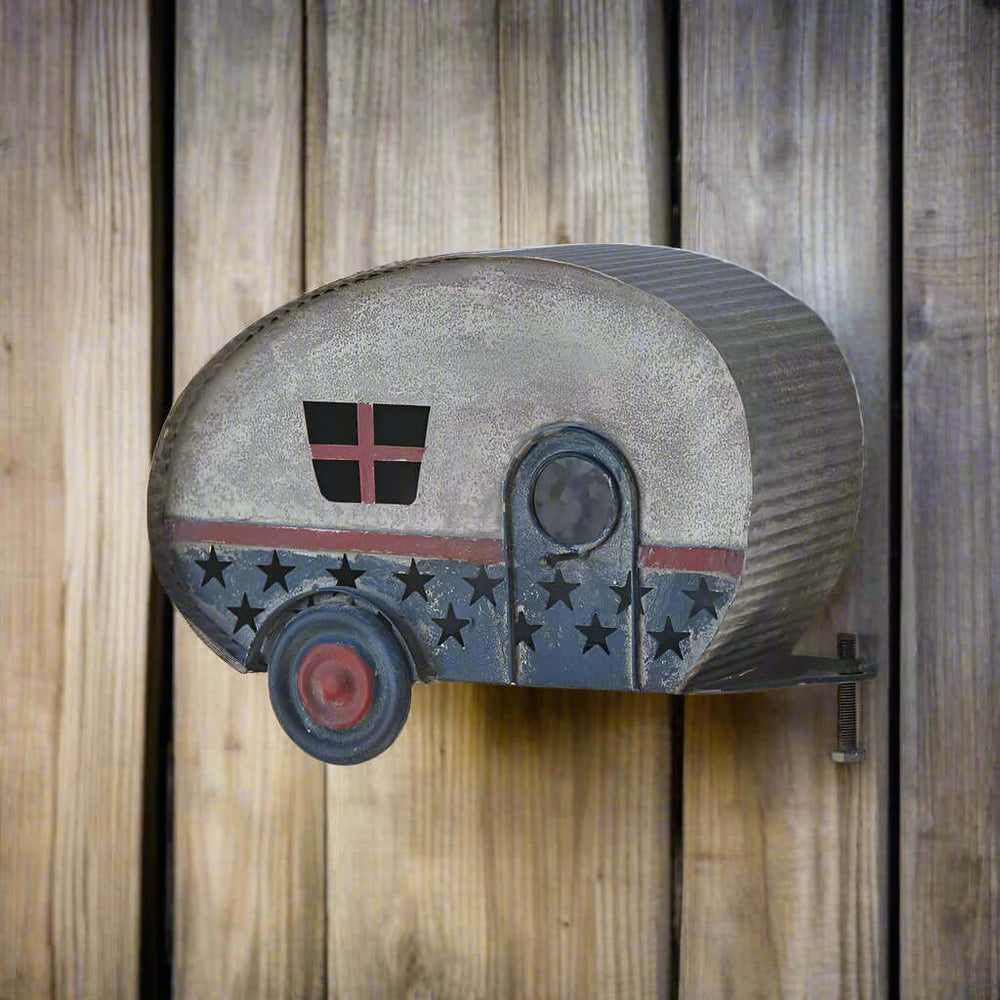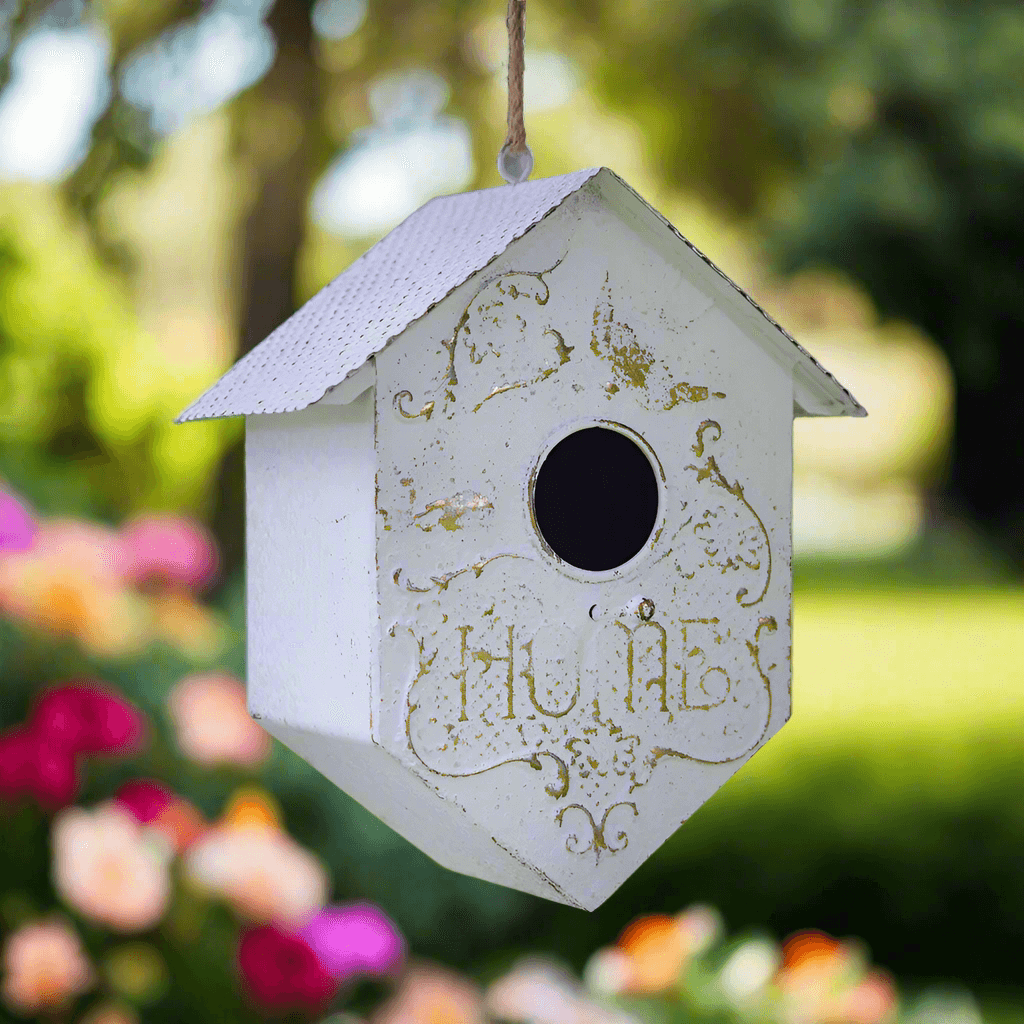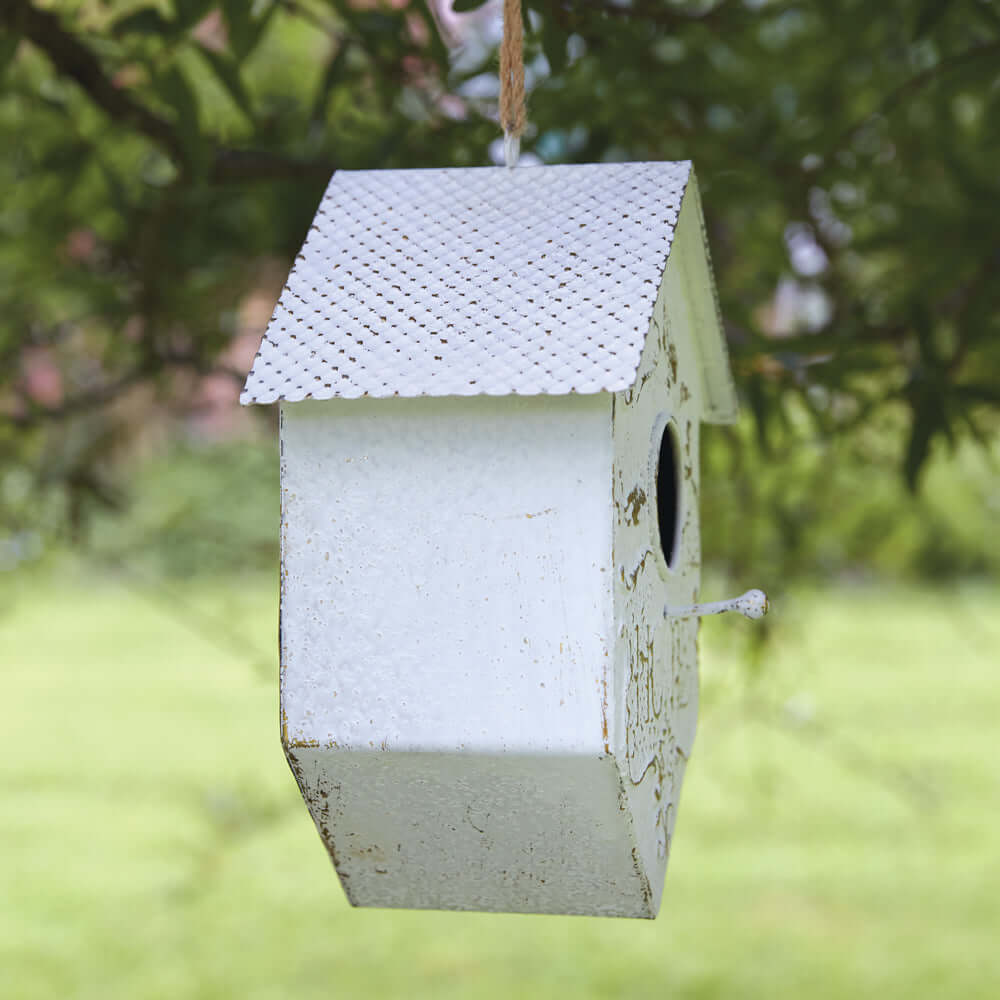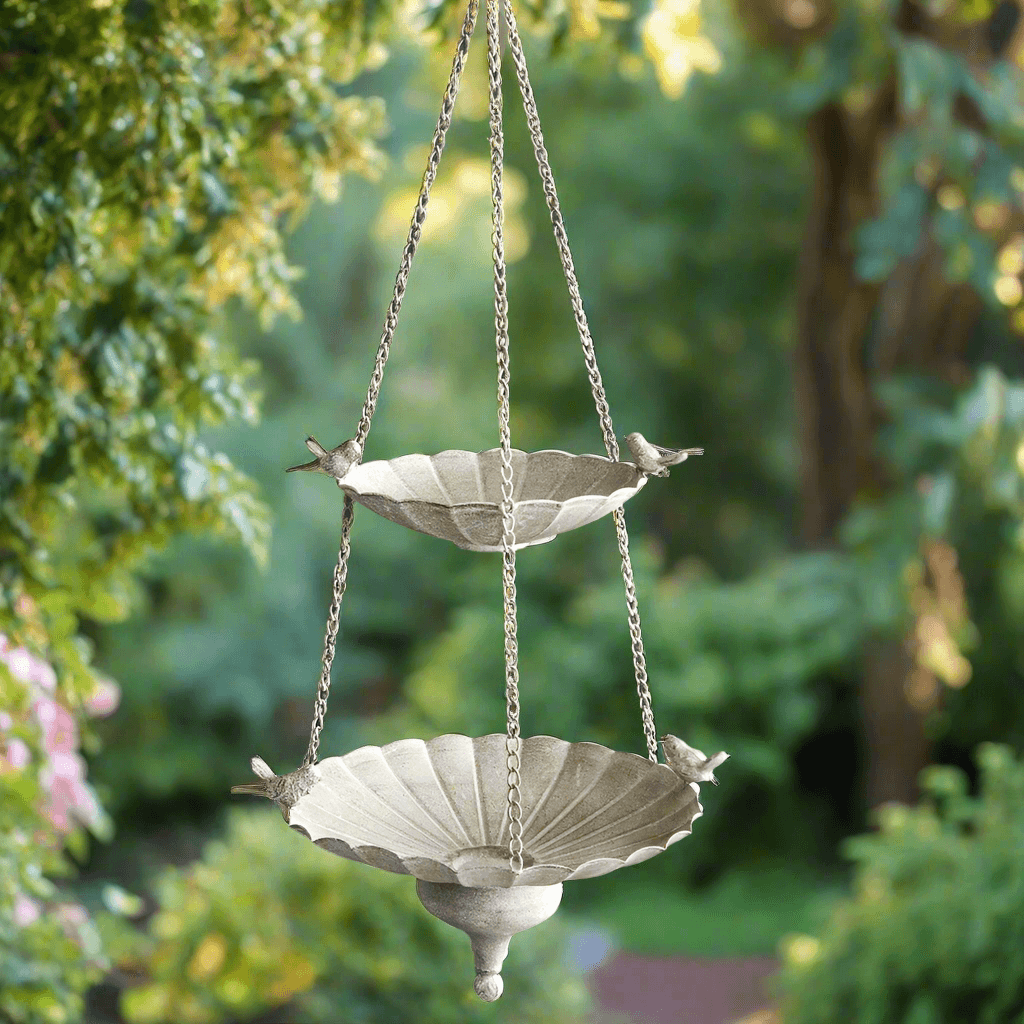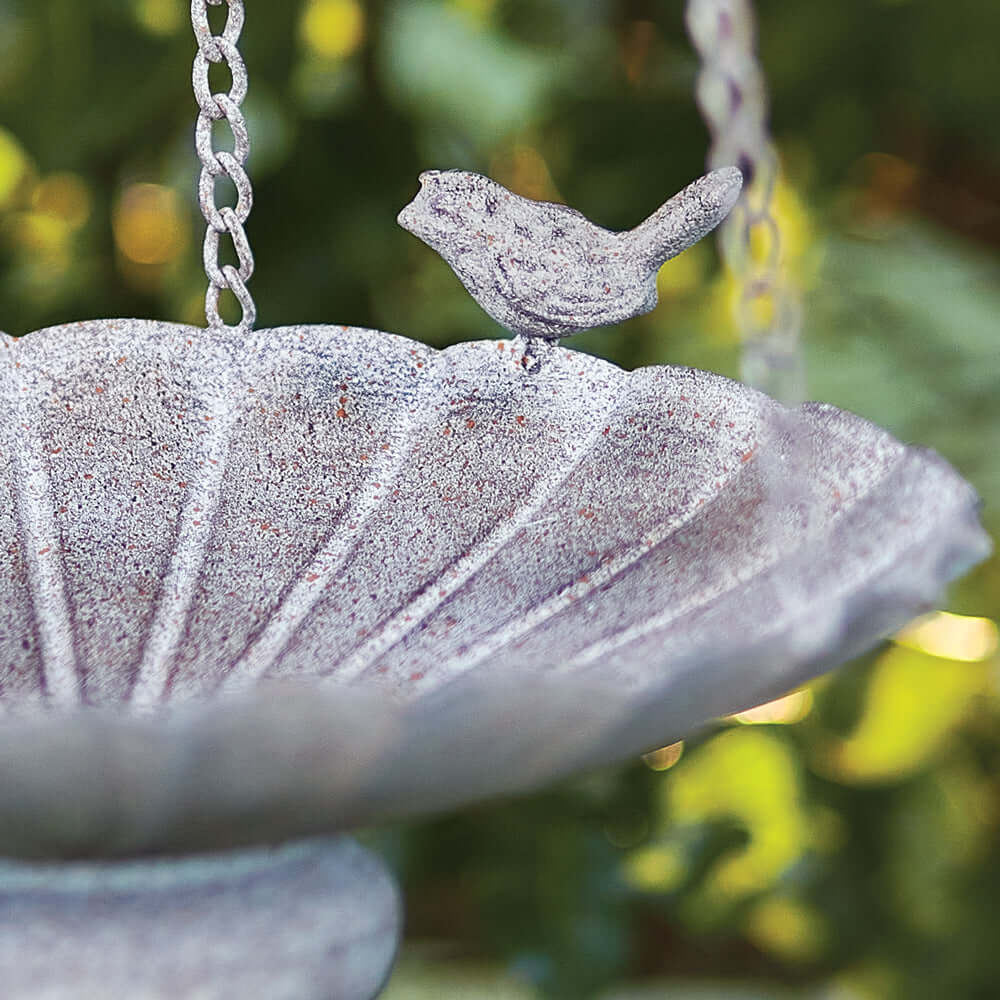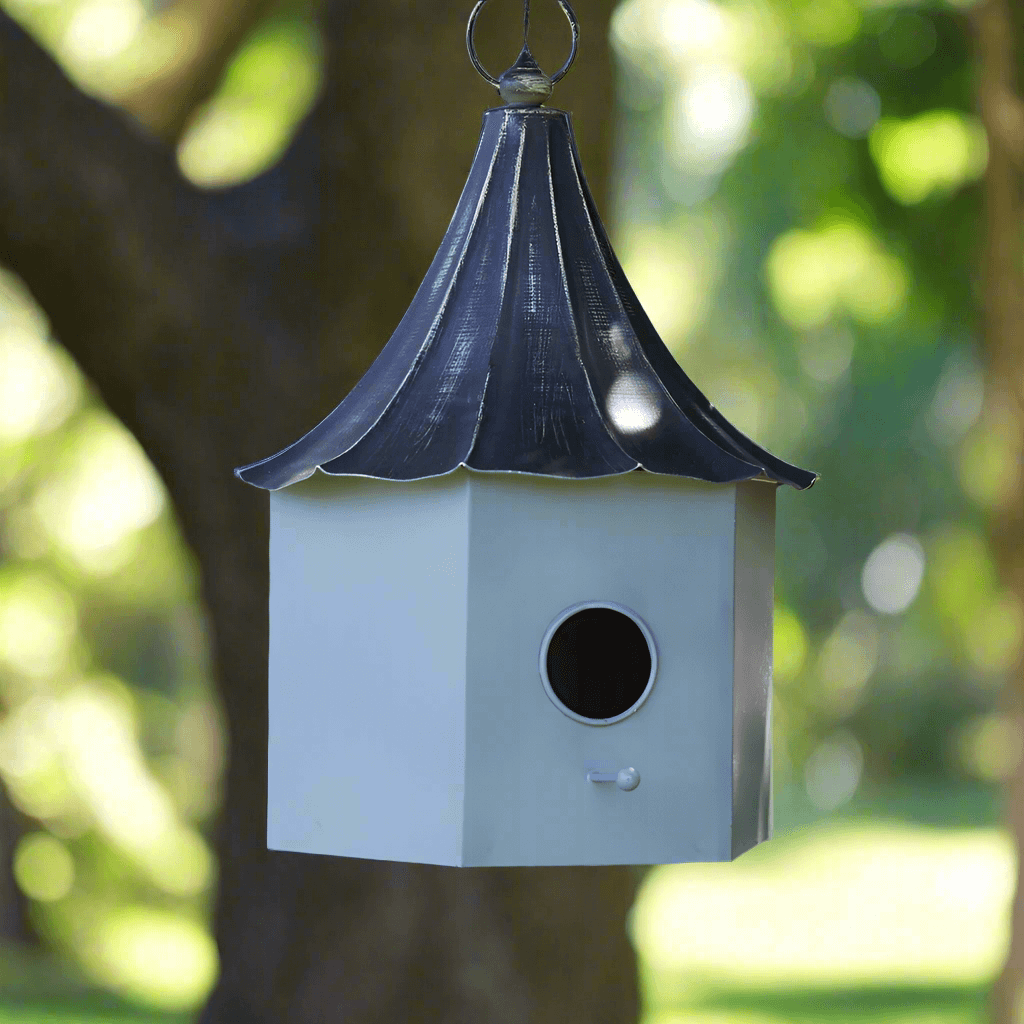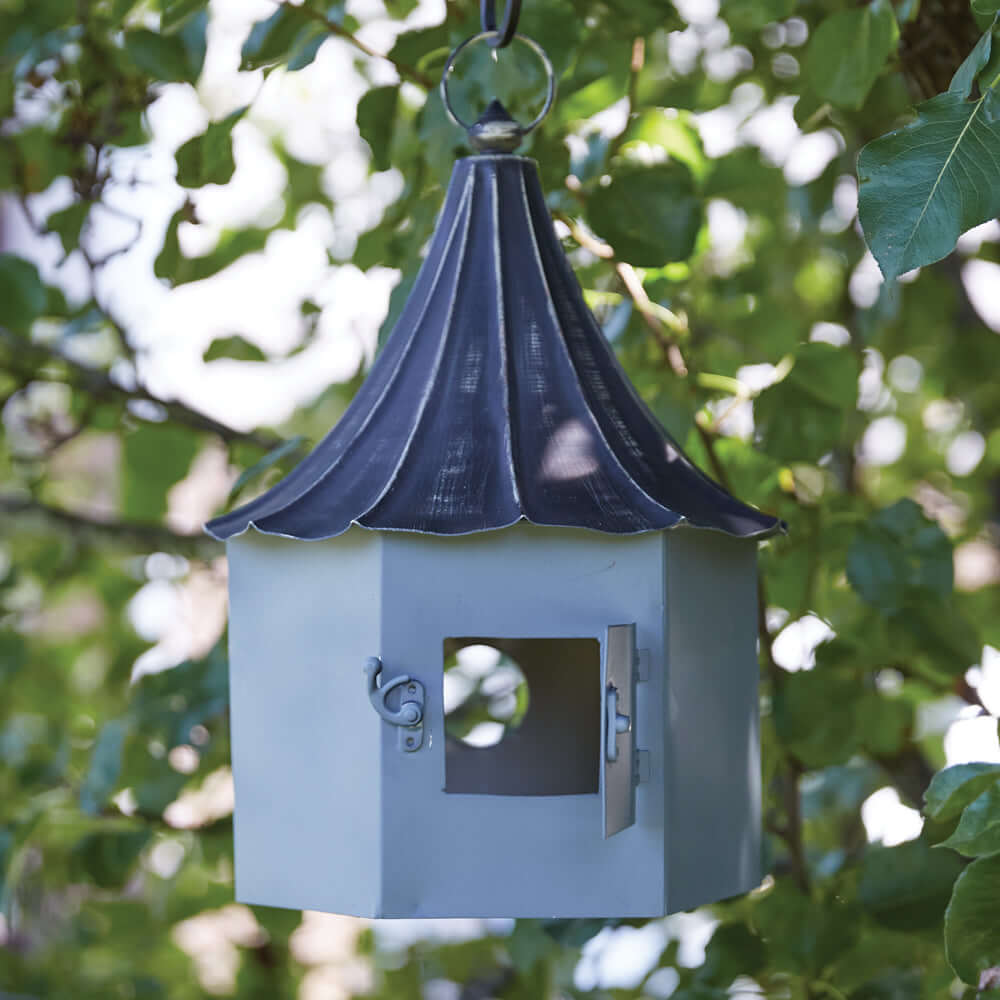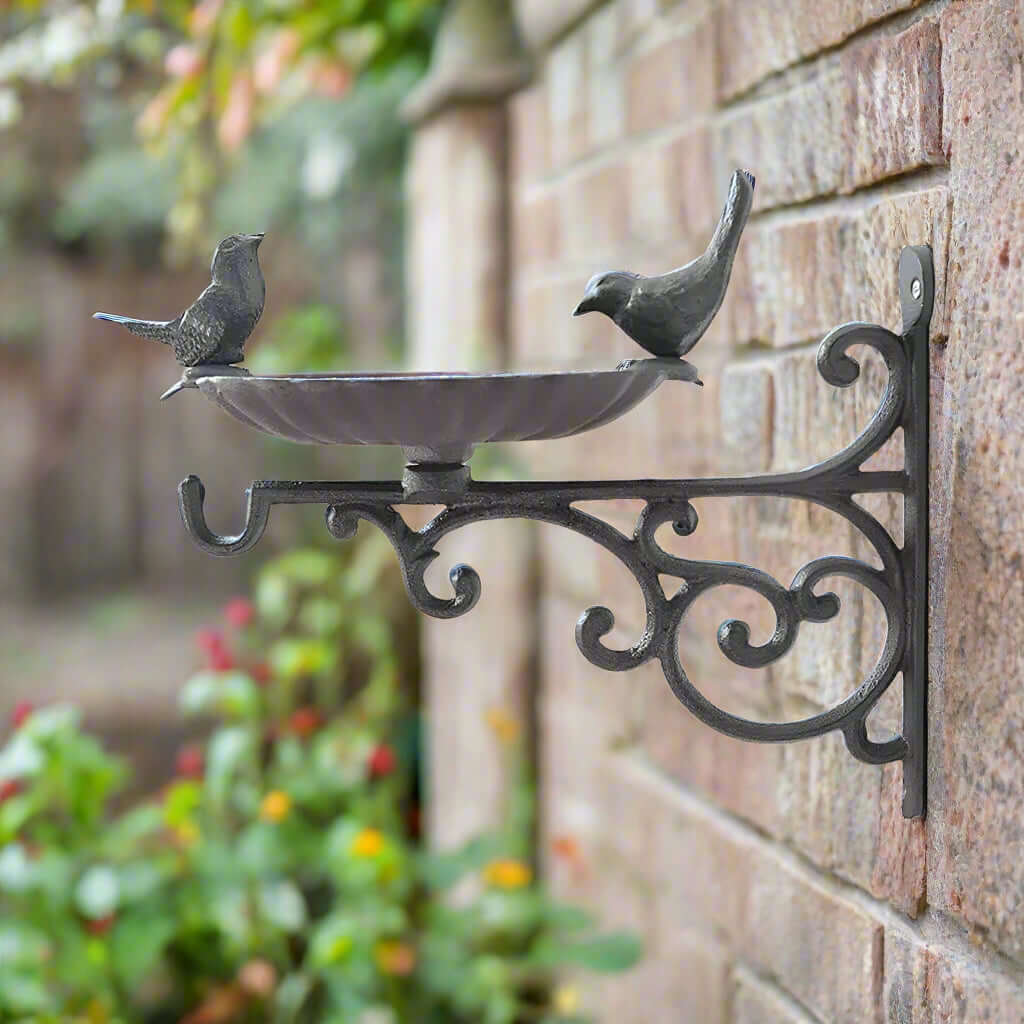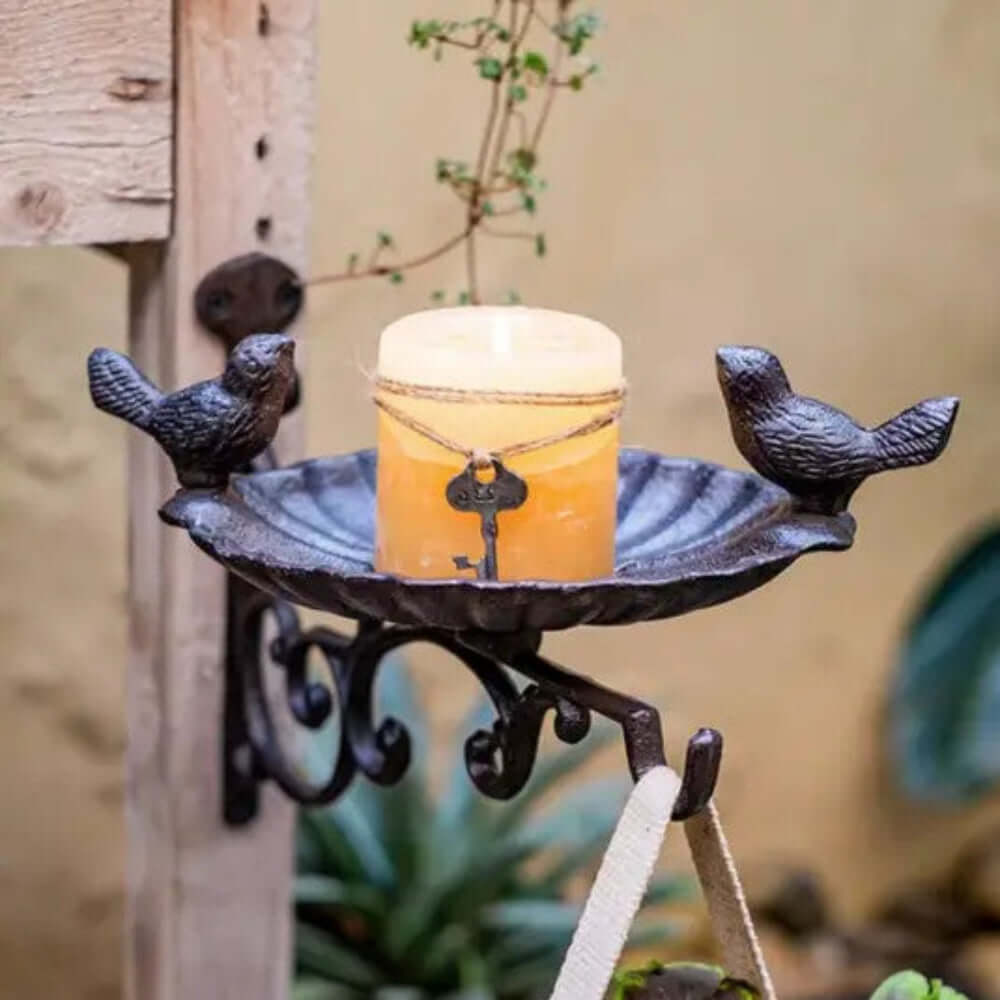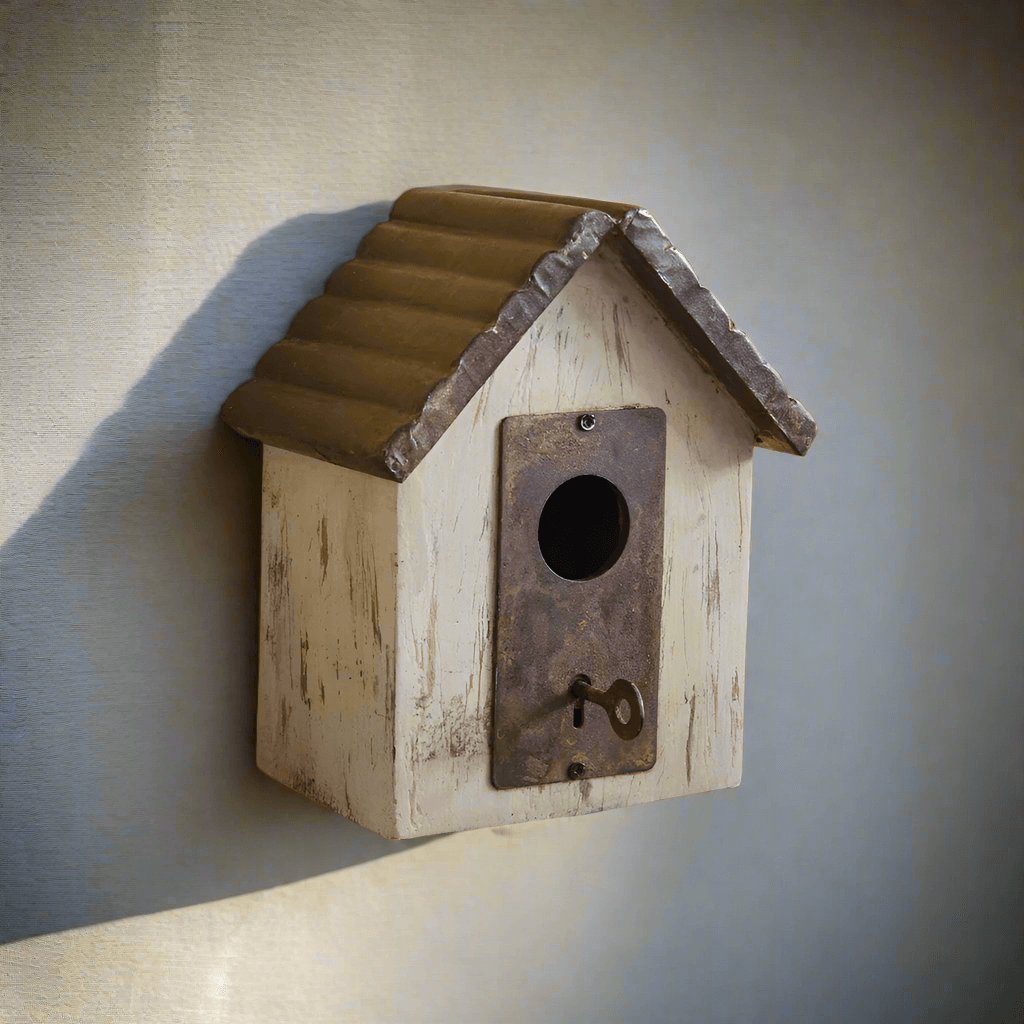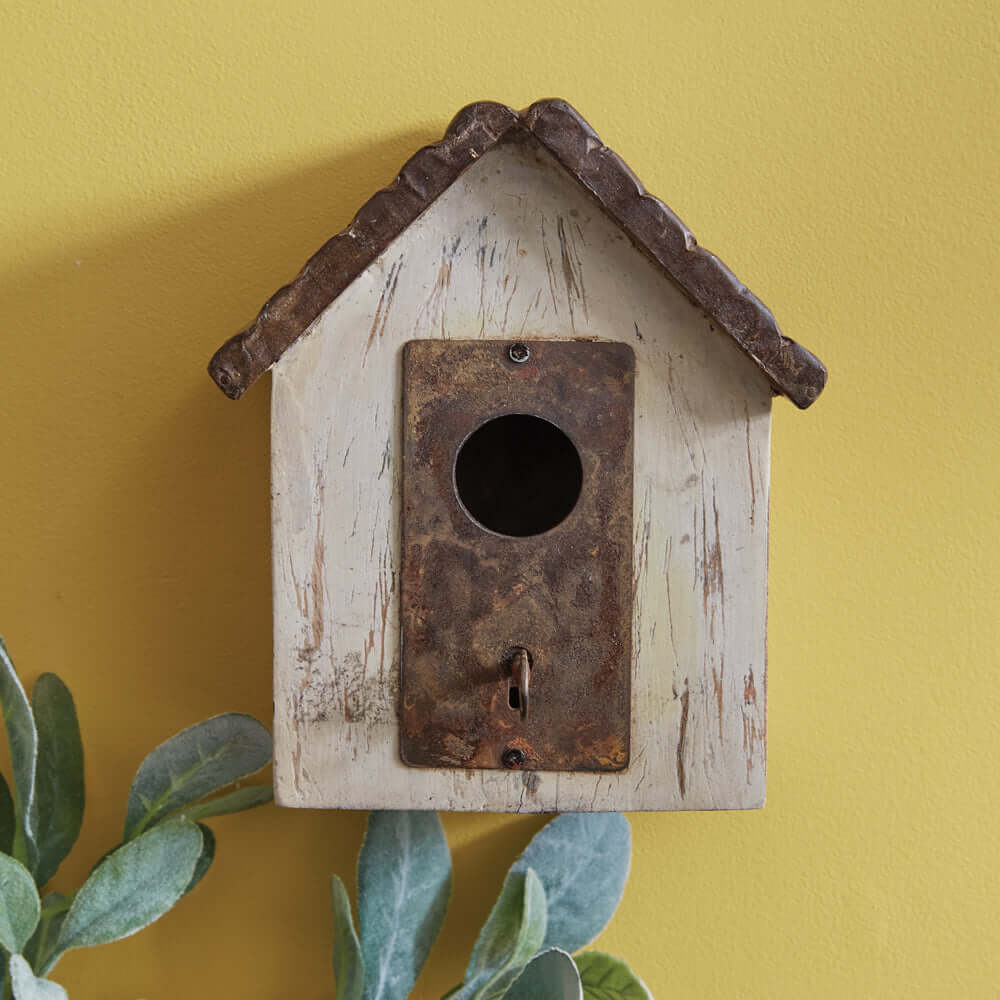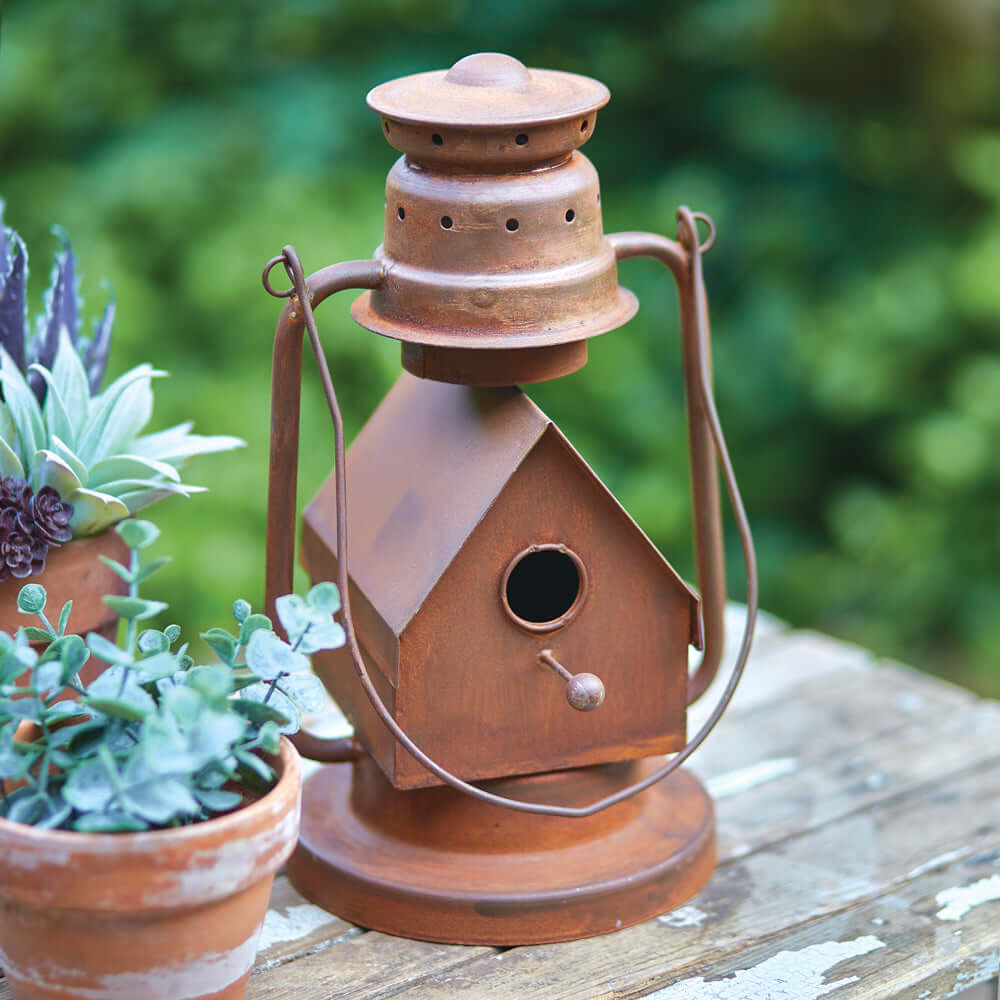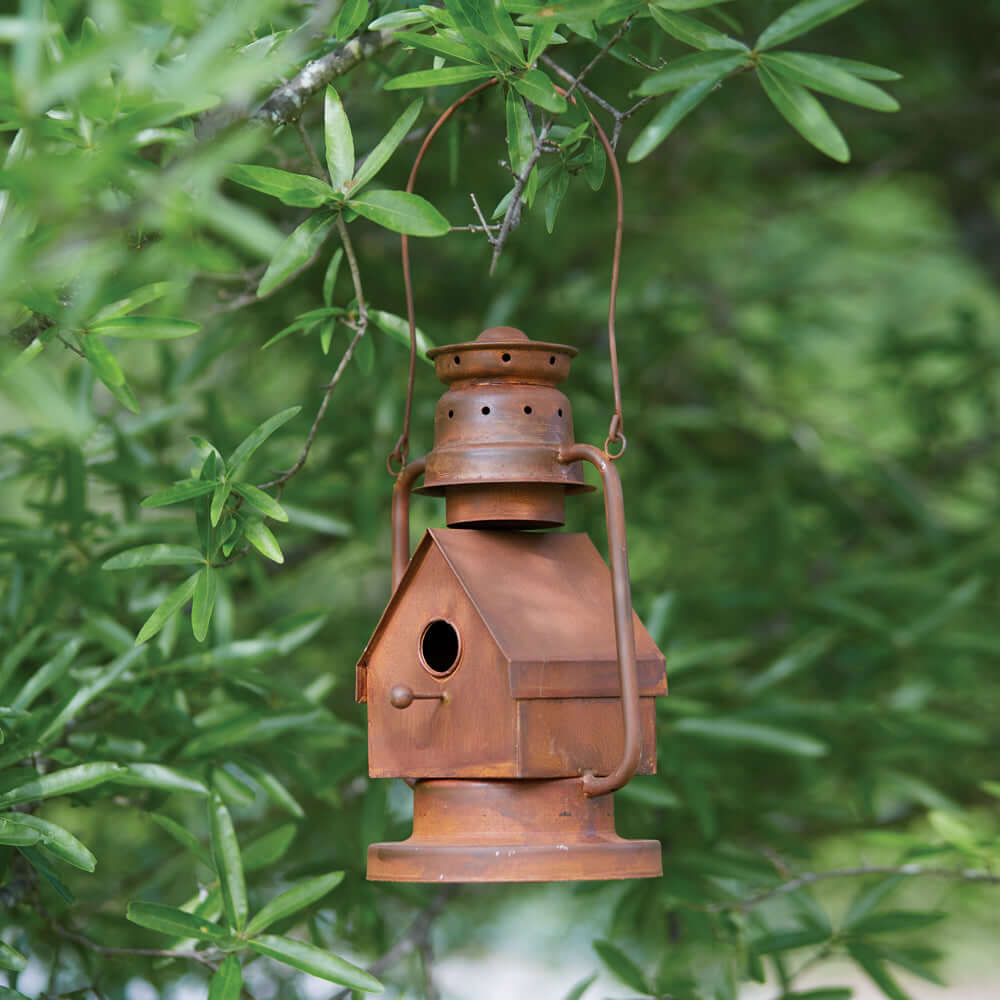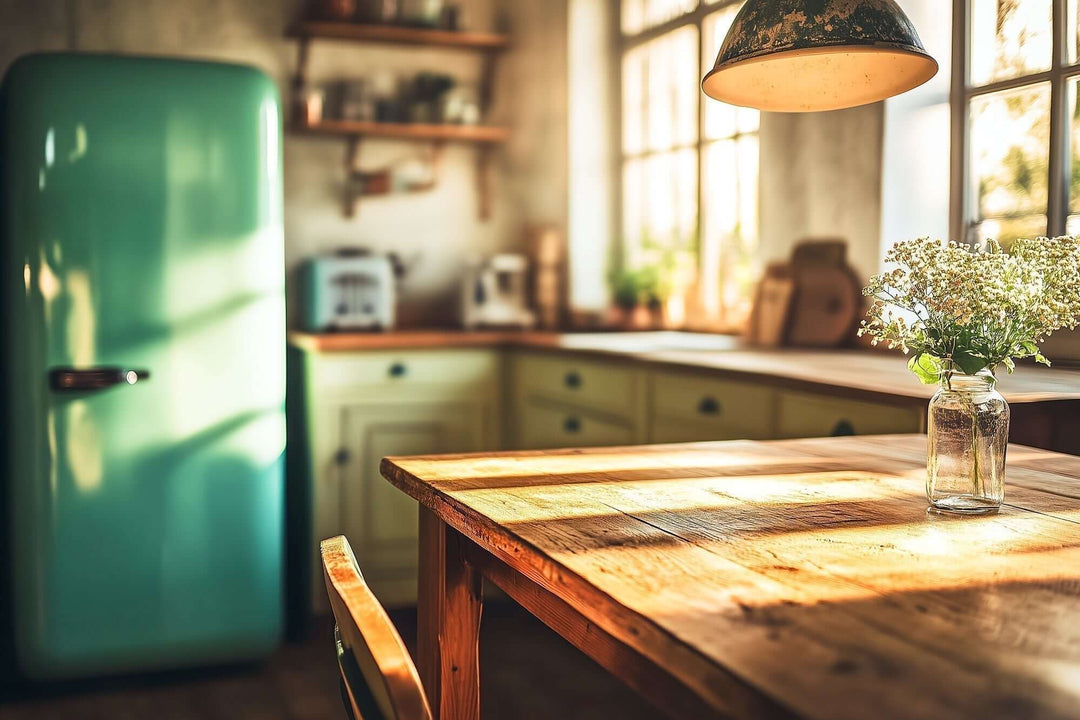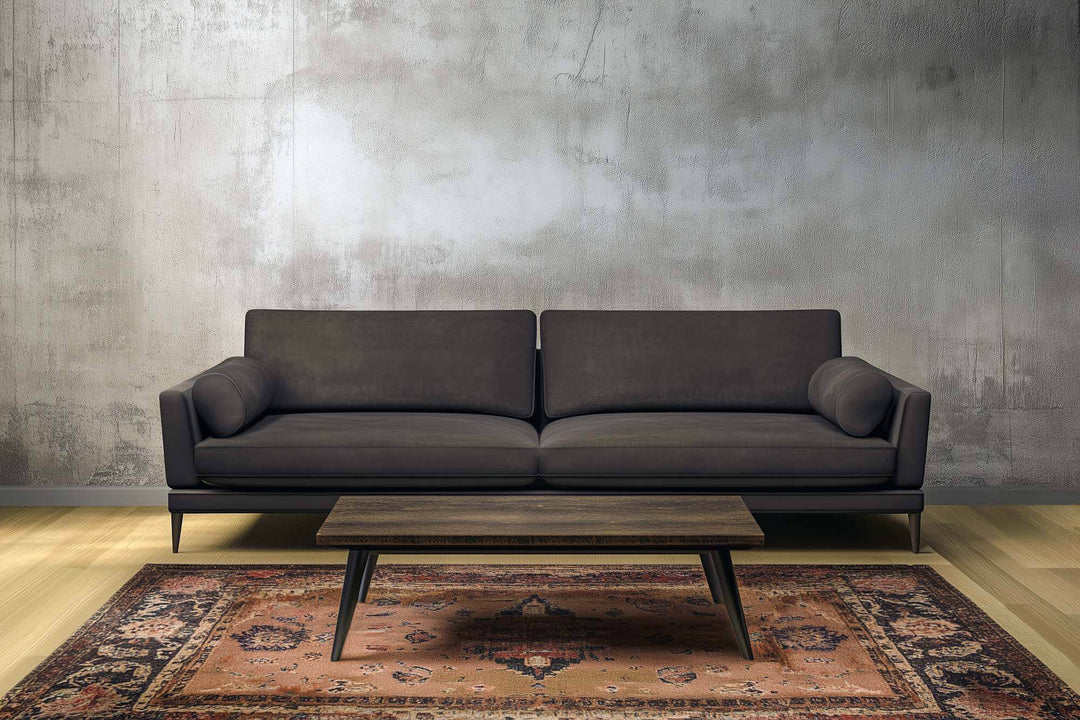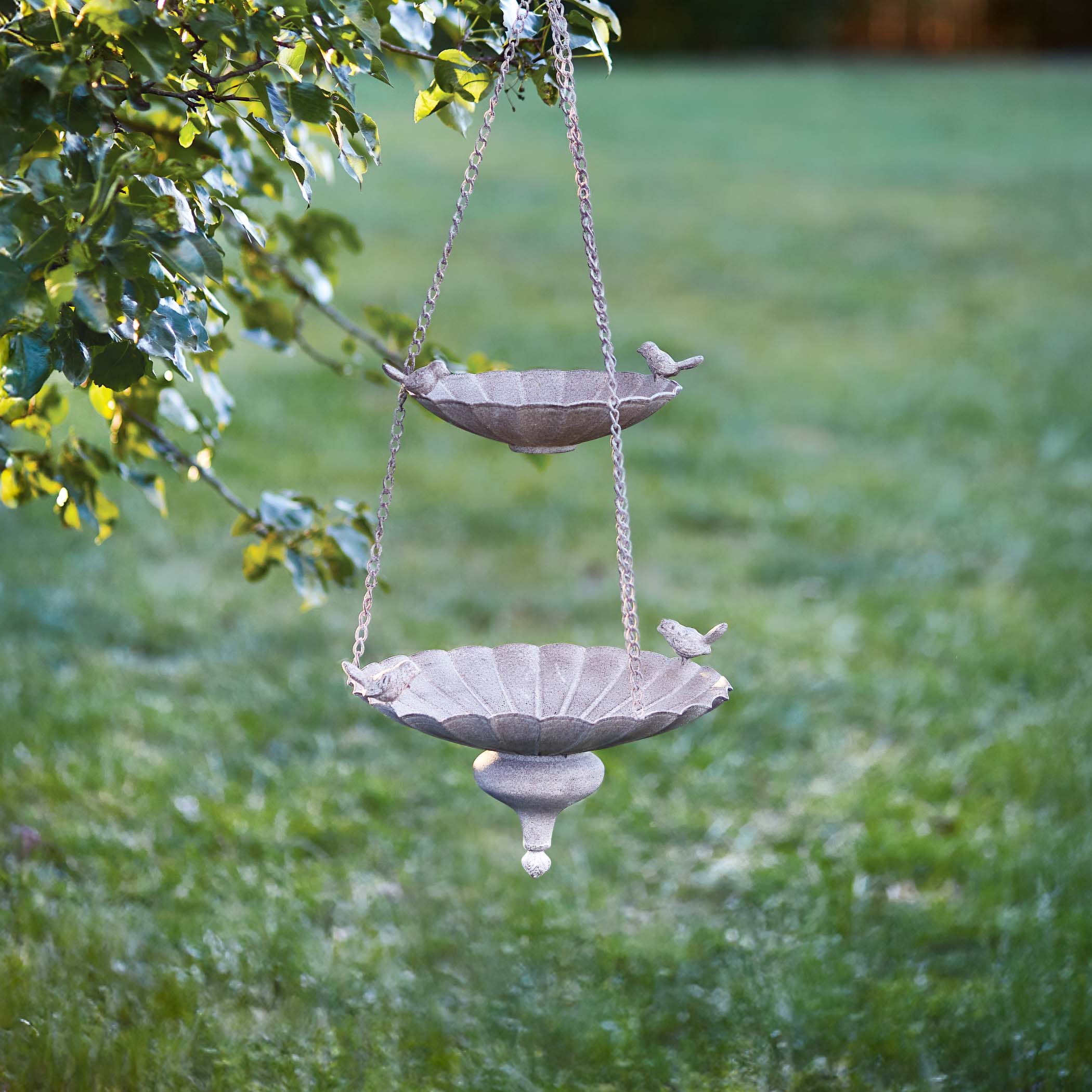
Vintage Bird Feeders and Birdhouses
Vintage Bird Feeders & Birdhouses: A Romantic Guide to Feathered Companions
Every garden has its voices: the whisper of leaves in the breeze, the gurgle of fountains, the creak of wrought-iron gates. But nothing completes the garden’s song like the flutter and melody of birds. To welcome them with feeders and birdhouses is to transform an outdoor space into something living, poetic, and deeply nostalgic.
Vintage-inspired birdhouses and feeders carry this romance further still. They are not just shelters or vessels of seed — they are small architectural jewels that recall the charm of bygone gardens. Painted in muted pastels, roofed in copper, or carved with scrolls, they summon the memory of Victorian terraces, rustic farmsteads, or French country courtyards. These are not antiques too fragile to endure the weather; they are newly made, designed for modern life, but infused with the soul of history.
This guide will wander through the history of birds in gardens, the poetry of their symbolism, the forms of vintage birdhouses and feeders, and the art of placing them through seasons and holidays. Along the way, we will discover that to feed and shelter a bird is more than a kindness — it is a gesture of beauty, hospitality, and belonging.
A Winged History: Birds and Beauty Through the Ages
From the earliest civilizations, birds have held a special place in human imagination. The Egyptians revered the ibis, Romans carved doves into their mosaics, and medieval poets saw in the lark the symbol of the soul ascending toward heaven. Gardens have long been their stage — places where nature and culture intertwine.
In Renaissance Italy, gardens were orchestrated like living paintings. Birds were encouraged with fountains, water basins, and fruiting trees, their presence completing the harmony of architecture and landscape. French formal gardens extended this tradition, while in England, Romantic landscapes prized the wild call of nightingales among groves and ruins.
Victorians adored birds for their symbolism and song. Ornate aviaries were built in city parks, and birdhouses appeared in domestic gardens as tokens of care. Illustrated books celebrated species with sentimental affection, while cast-iron birdbaths, feeders, and cages became cherished ornaments. In America, colonial gardens offered simplicity — wooden houses built for utility. But by the 19th century, with prosperity rising, birdhouses mirrored the architecture of homes themselves: miniature cottages, barns, and cupolas standing proudly among the flowers.
Today’s vintage-inspired birdhouses and feeders carry these echoes of history. A dovecote recalls medieval towers, a painted cottage birdhouse whispers of Victorian romance, and a copper-roofed feeder gleams with the rustic dignity of old farmsteads. By placing them in our gardens, we are not merely decorating — we are continuing a lineage centuries old.
Songs in the Air: The Joy and Benefits of Welcoming Birds
To invite birds into a garden is to invite life itself. Their movement animates the air; their songs provide music no instrument could equal. A robin splashing in a birdbath, a swallow darting above roses, a finch perching at a feeder — these moments stitch themselves into memory, becoming part of the garden’s soul.
But the presence of birds is not only poetic. They bring tangible benefits. Many birds feast on garden pests, from aphids to caterpillars, reducing the need for chemical intervention. Hummingbirds pollinate flowers as they sip nectar. Jays and thrushes disperse seeds, helping wild plants take root. Their rhythms mark the seasons: the first robin in spring, the swallow in summer, the finch in autumn, the cardinal in winter snow.
Birds also ground us in time. Their migrations remind us of cycles larger than ourselves, their nests teach patience, their songs invite us to pause. In literature and art, birds have long symbolized freedom, hope, and love. To give them a home and table in our garden is to embrace these meanings, turning our outdoor spaces into sanctuaries not just for plants, but for spirit.
Tables of Generosity: Feeders with Old-World Charm
A bird feeder is a table set for guests who never knock, who arrive with wings and repay our generosity with song. Vintage-inspired feeders carry this gesture into romance, designed as though they had graced gardens for generations.
Hanging feeders often resemble lanterns, their glass panes or iron scrolls glowing not with flame, but with seed. Suspended from branches or hooks, they sway gently in the breeze, echoing the charm of old oil lamps. Pedestal feeders stand proudly on columns, recalling classical basins or Victorian sundials, their presence both practical and ornamental. Wall-mounted feeders, simple yet charming, save space while adding detail to fences or courtyards.
Materials themselves tell stories. Wood evokes rustic farmsteads; copper gleams with country elegance, softening over time into verdigris; iron carries strength and scrollwork romance; ceramic and enamel add color and whimsy. Motifs are as varied as history: acorns and leaves, fleurs-de-lis, latticework, and miniature architectural details.
Each feeder is more than a vessel of seed. It is an invitation, a promise, a moment of generosity that brings life fluttering to the garden’s heart.
Houses of Whimsy and Shelter: Timeless Bird Abodes
If a feeder is the table, the birdhouse is the home. And nothing captures the imagination quite like a miniature dwelling raised among branches or standing proudly on a post. Vintage-inspired birdhouses feel like treasures discovered in attics or inherited from grandparents — weathered, whimsical, and filled with story.
Cottage-style houses painted in faded blues, creams, and greens recall pastoral English gardens. Their distressed finishes suggest years of love and weather. Victorian birdhouses are often ornate, with multiple tiers, balconies, and finials, like dollhouses for feathered guests. Rustic farmstead styles evoke Americana — barns, silos, and cabins with roofs of tin or copper. Classical dovecotes and cupolas speak of centuries-old traditions, once symbols of prosperity and hospitality.
For the whimsical heart, there are fairy-tale cottages with arched doors, nautical houses shaped like lighthouses, and folk-art creations with bright patterns. These birdhouses, while playful, still carry nostalgia, as if plucked from storybooks of another time.
Each house, no matter its form, offers shelter. It turns garden visitors into residents, transforming fleeting guests into neighbors who return year after year.
Placing the Poetry: Where Birdhouses and Feeders Belong
Placement is an art as much as selection. A birdhouse hung from a flowering apple tree feels like part of a pastoral painting. A pedestal feeder placed at the end of a path draws the eye and invites movement. A cottage birdhouse perched on a fence adds character to even the smallest yard.
Birdhouses and feeders should harmonize with other décor. An urn beneath a birdhouse creates balance, a trellis nearby encourages climbing roses to frame the scene, lanterns add glow to evening visits. Together they create “bird zones,” places where shelter, water, and food form a sanctuary for feathered guests.
Seasons suggest placement, too. In spring, birdhouses should be easily accessible for nesting. In autumn, feeders become focal points as foliage thins. During Christmas, garlanded feeders or red-painted birdhouses near evergreens conjure holiday card scenes. The goal is always story: the sense that the birdhouse or feeder has always belonged, waiting patiently to be discovered.
A Feathered Year: Birds Through the Seasons and Celebrations
Spring brings renewal. Nesting begins, and birdhouses become homes. Pastel-painted cottages among daffodils feel like Easter itself. Feeders brimming with seed ensure energy for journeys northward, while cherub statues and lanterns complete the sense of awakening.
Summer is abundance. Gardens buzz with life, and feeders overflow with activity. Bistro tables beneath arbors provide humans a stage to enjoy bird song as backdrop. For midsummer feasts or Independence Day, feeders and lanterns combine to create celebrations where nature is always present.
Autumn brings richness and nostalgia. Rustic barn-style houses among pumpkins, feeders decorated with harvest motifs, and cardinals and finches against gold foliage turn gardens into living paintings. Halloween offers its own charm: a raven perched on an iron feeder, lanterns glowing like jack-o’-lanterns.
Winter reveals stillness, but also need. Feeders become vital, their presence saving small lives through frost. A red birdhouse near snow-laden evergreens looks like a scene from a Christmas card. Garlands, ribbons, and lanterns add old-world festivity, turning the garden into a holiday storybook.
Through every season, birds complete the garden’s spirit.
Wings of Meaning: What Bird Décor Whispers to the Heart
Birds are more than creatures; they are symbols. To the Victorians, they were messengers of memory and sentiment. To poets, they have long represented freedom, hope, and love. In gardens, their presence feels like blessing.
A birdhouse is not just shelter; it is hospitality, a gesture of welcome. A feeder is not just a vessel; it is generosity, an open table. Together they transform a garden from a place of beauty into a place of belonging.
Even materials carry meaning. Wood speaks of warmth, copper of endurance, iron of strength, and enamel of joy. When we place these objects in our gardens, we do not only decorate — we inscribe meaning. A garden becomes a narrative where every bird, every ornament, carries story.
From Cottage to Courtyard: Blending Bird Décor with Any Garden
Vintage birdhouses and feeders belong in any garden, regardless of style. In a Victorian garden, ornate multi-tiered houses harmonize with scrollwork gates and cherub statues. In rustic cottage gardens, wooden feeders and painted cottages feel at home among lavender and roses.
French country gardens favor copper-roofed feeders, their verdigris patina echoing shutters and lavender fields. In modern minimalist spaces, a single whimsical birdhouse or lantern-like feeder softens sharp lines, adding soul to sleek design.
The key is restraint. A few well-placed vintage pieces anchor a space without overwhelming it, allowing birds and memory to do the rest.
Weathered Grace: Caring for Birdhouses and Feeders
Time and weather will always leave their mark, but this is part of the romance. Still, care ensures longevity.
-
Wood should be cleaned regularly and sealed to prevent rot. Painted finishes may be refreshed, or allowed to peel gracefully.
-
Copper will patina naturally into verdigris — embrace it, for it is its charm.
-
Iron may rust, but gentle brushing and sealing preserve its beauty.
-
Ceramic and enamel require occasional gentle cleaning to maintain color.
Birdhouses should be emptied and cleaned between nesting seasons, ensuring safety for new arrivals. Feeders must be refreshed often to keep seed clean. Care is not maintenance alone; it is an act of respect, ensuring that what welcomes life remains welcoming for years to come.
Gifts with Wings: Birdhouses and Feeders as Tokens of Love
Few gifts carry as much warmth as a birdhouse or feeder. They are not merely objects, but gestures of life and memory.
For weddings, a pair of birdhouses symbolizes partnership and home. For anniversaries, a copper-roofed feeder speaks of endurance and care. For housewarmings, a whimsical cottage birdhouse offers charm and welcome.
Seasonal gifting is rich with meaning. On Mother’s Day, a painted birdhouse reflects nurture; at Christmas, a feeder tied with ribbon becomes both useful and decorative. Even birthdays and retirements are brightened by such tokens, for they give not only beauty but life.
Bird décor also transforms events. A wedding arch flanked by birdhouses feels timeless. A garden party with lantern-lit feeders becomes enchanted. These pieces return home afterward, carrying memory with them, transforming from decoration into heirloom.
Where Birds and Memories Take Flight
To place a birdhouse or feeder in a garden is to make a promise: that this space is not only for us, but for all who bring it life. Vintage-inspired pieces carry this promise with romance, drawing on centuries of tradition while welcoming new memories.
A copper-roofed feeder gleaming in sun, a pastel cottage birdhouse nestled in blossoms, a rustic barn house in autumn leaves — each becomes more than an object. They are stories, lived and relived with every flutter of wings.
To begin is simple: one feeder, one birdhouse, one invitation. From there, the garden transforms. It becomes not only a sanctuary of beauty, but a sanctuary of belonging — timeless, romantic, and alive with song.
Frequently Asked Questions
The Romance of Birds in the Garden
There is a reason birds have always been cherished companions in gardens. Their songs awaken mornings with music, their movements animate the air, and their presence transforms a collection of plants into a sanctuary of life. In literature and art, they have symbolized freedom, hope, and eternal love, carrying meanings that transcend cultures and centuries. A garden without birds can feel still and silent, but one alive with wings feels timeless, as though it belongs to both past and present. Vintage-inspired birdhouses and feeders deepen this romance, inviting not only feathered guests but also memories and stories into the garden.
Birds are treasured in gardens because they bring life, music, and movement in a way that no ornament alone could provide. Their songs add a natural soundtrack that changes with the seasons, evoking joy in spring, tranquility in summer, nostalgia in autumn, and comfort in winter. Beyond beauty, birds also serve the garden’s health: many feed on pests, scatter seeds, and pollinate flowers, ensuring that the space flourishes naturally. In Victorian times, the presence of birds was seen as a sign of a well-tended and moral garden, one harmoniously balanced between humanity and nature. Ancient cultures also revered them, often depicting them as messengers between heaven and earth. Watching a bird land on a feeder or drink from a bath feels like a shared moment between human and creature, a fleeting connection that becomes memory. A garden filled with birds offers layers of experience — sight, sound, symbolism, and ecological balance. This is why so many gardeners describe birds not as visitors but as companions. Their presence completes the garden, giving it a soul.
Birds carry a profound symbolic weight that makes their presence in gardens especially meaningful. To many cultures, they represent freedom, the spirit’s flight beyond earthly ties. In Christian symbolism, doves signify peace and purity, while in literature, larks and nightingales have long been associated with love and inspiration. In Victorian gardens, birds often symbolized sentiment and remembrance, their presence considered a reflection of the heart’s inner world. A birdhouse, therefore, is not just a structure but a symbol of shelter and home; a feeder is not just a vessel but a gesture of generosity and welcome. When crafted in vintage styles, these symbols gain additional depth, recalling centuries of artistry and memory. To see a bird alight on a timeworn feeder is to witness beauty that feels both eternal and personal. Symbolism gives these small creatures and their homes resonance far beyond their size. Through birds, a garden becomes a canvas of meaning as well as a haven of beauty.
Birdhouses and feeders, especially when designed with vintage charm, carry the romance of memory into the garden. A weathered birdhouse with peeling paint recalls countryside cottages of the past, while a copper-roofed feeder conjures the elegance of an old estate. Their forms and patinas make them appear as though they have stood for decades, loved and softened by time. The birds they attract complete the illusion, for their timeless songs have been heard in gardens since antiquity. Together, the décor and the creatures create a sense of continuity, linking the present moment with centuries of tradition. Nostalgia arises from this layering — the garden becomes not just a personal space, but a place where history lingers. Each feeder and house seems to tell a story, even if newly made. They remind us of grandparents’ gardens, illustrated storybooks, or childhood summers spent outdoors. Nostalgia is not about the past itself, but about the feeling of belonging it evokes — something bird décor delivers effortlessly.
Vintage-style birdhouses and feeders are distinct because they carry artistry, romance, and symbolism in addition to function. Modern designs often prioritize efficiency and minimalism, using plain plastics or stark lines that feel purely utilitarian. By contrast, vintage-inspired pieces echo historical forms — scrollwork in iron, distressed wood finishes, copper roofs, or whimsical architectural details. These touches give them a sense of permanence, as though they belong to an older, slower world. They also blend more naturally into gardens, harmonizing with plants and other vintage décor such as urns, trellises, and lanterns. Their charm lies in storytelling: each design suggests a lineage, a memory, a connection to the past. While modern feeders may attract birds effectively, vintage ones invite both birds and beauty. They satisfy not only the garden’s practical needs but also the human longing for romance and nostalgia. This duality — usefulness and atmosphere — is what makes them so captivating.
Choosing a Birdhouse or Feeder
Selecting a birdhouse or feeder is like choosing a piece of jewelry for the garden — it must be both beautiful and meaningful. Vintage-inspired designs offer a spectrum of possibilities, from rustic cottages to ornate Victorian structures, each echoing stories of earlier gardens. Some are crafted for shelter, others for nourishment, but all are shaped to invite birds into daily life. Materials, motifs, and sizes determine not only their appearance but also how they will be used by feathered guests. These questions will help you find the piece that balances function with the timeless romance of design.
Vintage-style birdhouses range from quaint to elaborate, each type reflecting the spirit of an era. Cottage-style houses are perhaps the most nostalgic, painted in faded pastels or distressed finishes that suggest years of loving care. Victorian-inspired birdhouses often resemble miniature dollhouses, complete with turrets, balconies, and intricate scrollwork. For those drawn to rustic charm, farmstead birdhouses evoke barns and silos, capturing Americana in miniature. Dovecotes and cupolas are classical in feel, harking back to centuries when such structures symbolized wealth and hospitality. Whimsical designs are also popular — fairy-tale cottages, lighthouses, or folk-art painted houses that feel plucked from storybooks. Each type carries not only function but also personality, setting the tone of the garden. Because they are vintage-inspired, they marry durability with design, ensuring they are both usable and beautiful. Choosing one is as much about the atmosphere you want to create as the birds you wish to attract.
Vintage-inspired bird feeders are just as diverse, offering different ways to nourish garden visitors while enhancing atmosphere. Hanging lantern-style feeders resemble old oil lamps, glowing with charm when filled with seed. Pedestal feeders stand proudly, recalling classical urns or Victorian sundials, adding grandeur to open spaces. Wall-mounted feeders provide practicality and whimsy, often styled as small boxes or frames that attach to fences. Materials vary widely: warm wood, elegant copper that patinas beautifully, sturdy iron with scrollwork, and cheerful ceramic or enamel. Decorative motifs bring character, from leaves and acorns to latticework and fleur-de-lis. Unlike plain modern feeders, vintage ones often feel like heirlooms, as though they belonged to an old estate or countryside home. They not only attract birds but also become focal points in the garden’s design. Each type offers both generosity to birds and romance to the setting.
Choosing between a birdhouse and a feeder depends on whether you want to provide shelter or sustenance — or both. A birdhouse offers a safe haven for nesting, turning visiting birds into seasonal residents who return year after year. A feeder, by contrast, is a daily invitation to songbirds, encouraging lively activity in every season, particularly in winter when food is scarce. For the fullest experience, many gardeners choose both, creating zones where birds can feed, drink, and nest. A house appeals to those who enjoy watching the patient cycles of life — nest-building, hatching, fledglings taking flight. A feeder suits those who delight in constant motion and song, a flurry of wings at the garden’s heart. Style plays a role as well: a whimsical feeder may suit a patio, while a stately birdhouse may crown a post in the lawn. Ultimately, the choice is guided by what kind of relationship you want with your feathered guests — fleeting visits or enduring companionship.
The material you choose shapes both the look and longevity of your bird décor. Wood is the most traditional, offering rustic charm and natural insulation for birdhouses, but it benefits from occasional sealing to resist weather. Copper adds elegance and durability, often topping feeders or roofs with a glow that mellows into romantic verdigris over time. Iron and steel bring strength and ornate scrollwork, particularly in pedestal feeders or hanging designs, though they should be protected against deep rust. Ceramic and enamel add color and whimsy, recalling hand-painted folk pieces or enamelware from farmhouse kitchens. The best material often depends on climate: wood for temperate zones, metal for durability in harsher conditions, ceramic for decorative touches. A well-chosen piece combines practicality with vintage atmosphere, aging gracefully rather than deteriorating. Modern composites may also be used in vintage-inspired designs, giving the appearance of age with lightweight resilience. Each material has its charm, but the romance lies in its patina, the way time leaves its story on the surface.
Despite their ornate appearance, vintage-style birdhouses are very much functional. They are designed with proper entrance holes, ventilation, and dimensions to ensure they suit small garden birds like wrens, chickadees, and bluebirds. Many feature removable bases or panels, making them easy to clean between nesting seasons. Feeders, too, are crafted to dispense seed effectively while still retaining their decorative appeal. Unlike purely ornamental pieces, these designs balance nostalgia with usability, ensuring they are more than stage props. Birds will nest and feed in them just as readily as they would in simpler models, provided they are placed thoughtfully. Their charm lies in this duality: they enrich the garden’s aesthetic while genuinely supporting wildlife. In fact, a beautiful birdhouse or feeder often encourages humans to care more attentively, since the object feels too cherished to neglect. Function and beauty go hand in hand, just as they did in historical gardens.
Yes — vintage-style birdhouses are available across a range of prices, making them accessible to nearly every gardener. Simple wooden cottages or enamel-painted houses often cost little more than modern utilitarian designs. More elaborate Victorian or copper-roofed models may be higher in price, but they also serve as decorative focal points in the garden, offering both function and artistry. Their affordability is often surprising, considering the detail and craftsmanship involved. Because they are built for outdoor use, they offer durability, meaning a modest investment can last for years. The value also lies in their versatility: they can serve as daily wildlife supports, holiday decorations, or meaningful gifts. Unlike antiques, which are fragile and costly, these vintage-inspired designs are intentionally made to be enjoyed outdoors. Thus, they offer the best of both worlds — affordability and beauty. Owning one is not an indulgence, but a way to enrich daily life without extravagance.
In many ways, vintage-inspired bird décor offers greater value than plain modern pieces. Modern designs may be purely functional, but they rarely enrich the atmosphere of a garden or bring sentimental satisfaction. Vintage-style items do both — they provide food and shelter while also becoming decorative accents that elevate the space. They age with beauty, developing patina that enhances rather than detracts from their charm. Their craftsmanship often makes them sturdier than plastic modern counterparts, especially when made of wood, copper, or iron. The joy they provide is not only in the birds they attract, but in the feeling they inspire every time you look at them. In addition, they can serve as conversation pieces, heirlooms, or cherished gifts — purposes beyond mere function. Over time, their layered value makes them more rewarding. In short, they feed not just the birds, but the soul.
Placement & Styling of Birdhouses and Feeders
Placing a birdhouse or feeder is as much an act of design as it is of care. Where these pieces live in the garden shapes not only their usefulness to the birds, but the poetry they bring to the space. A birdhouse tucked in a flowering tree feels like a secret discovered, while a feeder standing proudly at the end of a path becomes a scene of welcome. These choices determine how your guests, feathered and human alike, experience the atmosphere. With vintage-inspired bird décor, placement is about weaving beauty and function into the same tapestry.
The ideal place for a birdhouse is one that offers both safety for birds and romance for the garden. A tree branch with dappled shade is a classic choice, recalling images of storybook cottages hidden in the woods. It provides natural shelter, making birds feel secure while giving humans a charming view. Posts placed in quiet corners also work beautifully, especially when crowned with a vintage house painted in soft colors. Avoid areas of heavy foot traffic or places where predators like cats may lurk. A house should be elevated enough to feel protected, yet still close enough for the gardener to enjoy. Think of how it frames the view: does it complete a pathway, punctuate a flowerbed, or invite the eye upward into the branches? Hanging it against a backdrop of blooms or foliage enhances the atmosphere. A well-placed birdhouse looks as though it has always been part of the landscape, waiting patiently for winged tenants.
Height is both a practical and aesthetic consideration. Most small birds prefer birdhouses set five to ten feet above the ground, high enough to discourage predators but low enough for easy monitoring. Feeders benefit from a similar height, where birds feel safe yet visible to the gardener. Placing them at eye level allows for the greatest enjoyment — you can watch the birds without straining or disturbing them. In wooded areas, slightly higher placement may work, blending with branches while offering protection. On patios or balconies, lower placements still work if the area feels secure. Height also changes the visual story: a high house feels lofty and serene, while a feeder at waist or eye height creates intimacy. Always remember, practicality serves romance here — the birds must feel safe, or the most beautiful house will remain empty. When done well, height placement harmonizes safety with spectacle.
Yes — even the smallest outdoor spaces can host birdhouses and feeders with charm. Hanging feeders from railings or hooks transforms balconies into lively sanctuaries, where songbirds bring movement to city air. Wall-mounted feeders or houses work wonderfully on fences, creating vertical layers of beauty without requiring space on the ground. Small cottage-style birdhouses look especially delightful on balconies, resembling miniature homes within homes. Choosing compact designs ensures functionality without crowding. The effect can be surprisingly romantic — a lantern-like feeder glowing in the evening, or a pastel-painted birdhouse nestled among potted plants. Birds do not require acres of land; they seek safety and sustenance, both of which can be offered even in urban gardens. By bringing them close, balconies and patios gain atmosphere far beyond their size. The intimacy of seeing birds at such proximity feels almost magical. In this way, vintage bird décor turns even the smallest space into a timeless retreat.
Harmony is achieved when bird décor blends with the garden’s existing vintage accents. A wrought-iron feeder complements arbors, trellises, and gates, echoing scrollwork motifs. Painted wooden houses look charming beside distressed planters or rustic benches. Copper-roofed feeders gleam beautifully near lanterns or weathered urns, especially when the patina is echoed in other materials. Placement near statues or fountains can create tableaux that feel staged yet natural, like scenes from romantic paintings. Styling also involves balance — too many large accents in one area can overwhelm, while spacing them across the garden creates rhythm. Colors and finishes are key: soft greens, creams, and blues suggest nostalgia, while natural wood and metal harmonize with greenery. By treating bird décor as part of the overall design rather than an afterthought, the garden feels curated and intentional. In this way, each piece becomes part of a larger story, not just a functional object.
Whether to group birdhouses or separate them depends on both style and bird behavior. Birds generally prefer space between houses to reduce competition, so practical placement often means keeping them apart. Yet for aesthetic purposes, grouping can be charming when done thoughtfully. A cluster of small houses on a wall or fence can resemble a whimsical village, enchanting to behold. This works best with decorative houses that are not intended for heavy nesting. For functional houses, spacing them apart across the garden creates multiple focal points while respecting birds’ natural territories. Feeders, too, can be grouped to create lively “dining zones” for flocks, or spread out to avoid crowding. Consider the story you want to tell: a village of houses for whimsy, or solitary homes tucked into corners for intimacy. Either choice works if balanced with care for the birds themselves. The most successful gardens find a way to honor both beauty and behavior.
Security ensures not only the safety of birds but also the longevity of the décor. Birdhouses can be mounted on sturdy posts, attached to walls, or hung from strong tree branches using weather-resistant hardware. Avoid flimsy hooks or unstable supports, which can sway too much in storms. When using posts, bury them firmly in the ground or secure them with brackets for stability. Houses should tilt slightly forward to prevent rain from entering, and entrances should face away from prevailing winds. On walls or fences, screws and brackets offer greater reliability than nails or adhesives. Safety from predators is paramount: placing houses away from climbing routes ensures nesting remains undisturbed. A securely installed birdhouse not only lasts longer but feels more like part of the garden architecture. With thoughtful installation, even the most delicate-looking vintage house becomes a steadfast sanctuary. Practicality here serves the romance of longevity.
Yes — most vintage-inspired feeders are designed to be as functional as they are beautiful. Hanging feeders typically require nothing more than a strong hook or branch, while pedestal feeders often assemble with a few simple parts. Wall-mounted feeders attach easily with screws or brackets, much like decorative planters. Despite their ornate appearance, they are made for everyday use, not just display. Many are lightweight enough to move, allowing flexibility in placement through the seasons. Their accessibility is part of their charm — you can change positions, create vignettes, or relocate them to suit both birds and design. Unlike antiques, which may be fragile, these modern vintage-inspired pieces are crafted with durability in mind. Ease of use ensures that even the most romantic feeder can be practical. This balance encourages more people to incorporate them, enriching gardens with both beauty and life. In truth, their simplicity makes their charm even more rewarding.
The Birds Themselves
Birds are not mere visitors; they are the soul of a living garden. Their colors, songs, and rhythms bring an enchantment that no human hand could craft. Each species carries its own story — the robin of spring renewal, the swallow of summer skies, the cardinal of winter snow. By offering them shelter and sustenance through vintage-inspired houses and feeders, we do more than attract wildlife; we weave their cycles into our own. These questions celebrate the birds themselves, reminding us of their beauty, their benefits, and their deep connection to the human heart.
Vintage birdhouses, though nostalgic in design, are crafted with dimensions and openings that suit small garden birds. Wrens, chickadees, and titmice are among the most frequent residents, appreciating snug spaces that mimic natural cavities. Bluebirds also seek such houses, their presence a delight with their brilliant coloring and gentle songs. In rural areas, swallows and sparrows often adopt vintage cottages and rustic barn-style houses. The charm of these designs is that, while they echo human architecture, they remain welcoming to wild guests. Each species brings its own energy — wrens with their busy nesting, bluebirds with their calm presence, swallows with their graceful flight. The delight lies in observing these tiny families claim homes as though they had always been waiting for them. Over time, the return of the same species each season creates continuity, turning a decorative object into a family’s legacy. In this way, vintage birdhouses become part of life’s repeating story.
Feeders attract a lively variety of songbirds, depending on the type of seed and the region. Finches are among the most common, gathering in cheerful flocks to enjoy sunflower or thistle seed. Cardinals, with their brilliant red plumage, are drawn to feeders in winter, bringing color to even the grayest days. Sparrows, nuthatches, and chickadees often dart in and out, their movements quick and lively. In summer, goldfinches and grosbeaks add bursts of color, while in some areas, even woodpeckers may visit larger feeders. The type of feeder matters — tray feeders encourage flocks, while hanging lantern-style feeders are better for perching birds. The romance of a feeder is the constant variety, the way it changes with seasons and migrations. One day may bring a solitary visitor, the next a bustling crowd. Watching these guests is both entertainment and meditation, grounding us in the rhythms of nature.
For birds, a house is not a whimsy but a lifeline. Natural cavities, once plentiful in old trees and barns, have grown scarce in modern landscapes. Birdhouses replace these shelters, giving small birds a safe place to nest and raise their young. Protection from rain, wind, and predators allows fledglings to thrive where they might otherwise perish. Vintage-inspired birdhouses combine this necessity with artistry, proving that practicality need not sacrifice beauty. Each house becomes a stage where cycles of life unfold: twigs gathered, eggs laid, hatchlings fed, young ones taking first flight. The sight of parents tirelessly feeding chicks is as old as time, yet never fails to inspire awe. For the gardener, providing this shelter creates connection, a sense of participation in the natural world. A birdhouse, however small, ensures that the future of these creatures is tied to our own care. In offering shelter, we honor both tradition and life itself.
Winter is the season when feeders prove most vital. Snow blankets the ground, burying seeds and berries, while frost hardens the earth against foraging. A stocked feeder becomes a beacon of survival, offering nourishment when other food is scarce. Cardinals, chickadees, sparrows, and finches often rely heavily on such gifts during the cold months. For the gardener, seeing these bright, lively visitors against the white landscape is a reward of rare beauty. A red cardinal perched on a copper-roofed feeder is a living Christmas card, full of warmth and nostalgia. Beyond beauty, the feeder sustains life, ensuring that flocks survive the harshest conditions to return in spring. The romance of vintage feeders deepens this role, as their timeless designs make generosity itself part of the garden’s charm. In winter, a feeder is not only décor but compassion made visible. Its presence says the garden is alive, even in stillness.
Creating a bird-friendly garden involves layering food, water, shelter, and atmosphere. A feeder stocked with varied seeds attracts diversity, while a birdbath ensures refreshment. Birdhouses provide shelter, but so too do trees, shrubs, and hedges where birds can rest and hide. Choosing native plants encourages insects and berries that sustain local species. Placement matters — feeders should be visible yet safe, houses should be tucked yet accessible. Consistency builds trust: when birds know a garden always provides, they return faithfully. Adding touches like climbing roses around a birdhouse or lanterns near feeders makes the space appealing to both birds and humans. Seasonal adjustments also help, from high-energy food in winter to nectar-rich flowers in summer. Above all, patience is key. With time, birds come to see the garden not as a stopover but as a sanctuary.
Birds play vital roles in maintaining the balance of the garden. Many species consume insects, reducing populations of pests that damage plants. Others disperse seeds, carrying the promise of new growth across the landscape. Hummingbirds and other nectar-feeders aid pollination, ensuring flowers bloom abundantly. Their presence thus reduces reliance on chemicals, making the garden more sustainable and natural. Beyond ecology, birds bring rhythm: their songs mark dawn, their migrations announce the seasons. For centuries, gardeners have relied on birds as both companions and caretakers. A feeder or house is not merely an indulgence, but a practical invitation that strengthens the entire ecosystem. When birds thrive, the garden thrives. Their beauty is the visible tip of a deeper partnership between nature and nurture.
Safety is paramount, even with the most charming designs. Vintage-inspired birdhouses should have proper ventilation, drainage, and entrance hole sizes suited to small species. Sharp edges should be avoided or smoothed, especially on metal feeders. Paints and finishes should be non-toxic, ensuring no harm comes from pecking or contact. Placement should reduce risk from predators, avoiding low positions near bushes or open ground. Regular cleaning ensures hygiene, preventing disease spread among flocks. For feeders, avoiding moldy or damp seed is critical. The best designs combine beauty with function, ensuring every detail serves life as well as atmosphere. While vintage aesthetics suggest nostalgia, modern craftsmanship ensures they meet today’s standards of wildlife safety. A well-chosen piece thus offers both romance and responsibility.
Through the Seasons & Holiday Charm
Birdhouses and feeders are not static ornaments; they change character with the seasons, echoing the rhythms of nature and the moods of celebration. In spring, they are bright with promise, in summer they host abundance, in autumn they glow with nostalgia, and in winter they become beacons of life. Holidays weave their own enchantment, as bird décor is dressed with ribbons, garlands, or even pumpkins. These pieces, vintage in style, offer a stage for both birds and festivity, reminding us that the garden is alive all year. In every season, their presence is both practical and poetic, grounding our celebrations in timeless beauty.
Spring is the season of renewal, and bird décor should reflect its freshness. Pastel-painted birdhouses nestled among blossoming daffodils or tulips create a scene straight from a storybook. Feeders should be filled generously to welcome returning migratory birds, their songs blending with the awakening of flowers. Hanging a birdhouse in an apple or cherry tree magnifies the romance, pairing blooms with new nests. Easter brings opportunities for whimsy: a rabbit statue beside a feeder, ribbons tied to an arbor, or pastel lanterns hung near birdhouses. Spring styling should balance charm with readiness, as many birds will seek shelter for nesting. Placement should allow easy access while also creating picturesque vignettes in the garden. Small details like enamel watering cans or terracotta pots near bird décor add to the sense of a lovingly tended sanctuary. In spring, the atmosphere is one of hope and welcome. Bird décor embodies both, offering beauty and refuge.
Summer is a season of abundance, and bird décor becomes part of the garden’s daily celebrations. Feeders overflow with activity, attracting flocks of finches, sparrows, and other lively guests. Birdhouses are alive with nestlings, their parents darting tirelessly in and out. Placing feeders near patios or bistro tables brings song to outdoor meals, enhancing evenings with natural music. Vintage lantern-style feeders glow particularly beautifully at twilight, when gatherings linger beneath arbors. Summer styling favors fullness: overflowing urns beside feeders, climbing roses framing birdhouses, and lanterns lining paths. Events like midsummer feasts or Independence Day can be made magical with feeders adorned with garlands or small flags. The warmth of the season deepens the sense of hospitality, both to birds and to people. A vintage birdhouse or feeder in summer is never still — it is alive with wings, fragrance, and light. Its charm lies in being at the heart of both nature and memory.
Autumn is the garden’s nostalgic season, and bird décor should echo its richness. Rustic barn-style birdhouses pair beautifully with pumpkins, gourds, and chrysanthemums. Feeders can be dressed with garlands of dried corn husks or leaves, creating a tableau that feels both rustic and celebratory. As birds prepare for migration or the cold months ahead, feeders provide crucial sustenance. Cardinals, finches, and sparrows linger, their colors vivid against the golden foliage. Placement among autumn displays transforms bird décor into part of harvest celebrations. For Halloween, a wrought-iron feeder or darkly painted birdhouse can suggest gothic charm, especially when paired with lanterns. The season is one of gratitude, and offering food to birds reinforces this spirit. Autumn styling should feel abundant, layered, and warm, turning every corner into a memory waiting to be made. In this season, bird décor bridges the joy of harvest with the anticipation of winter’s quiet beauty.
Winter transforms bird décor into symbols of hope and compassion. When the landscape is bare and silent, a feeder becomes a lifeline, offering nourishment to creatures who otherwise might not survive. Red cardinals perched on copper or iron feeders bring vivid contrast to snowy backdrops, creating scenes worthy of postcards. Birdhouses, often empty of nests, still stand as guardians of promise, waiting for spring. Their snow-capped roofs add romance, while garlands of evergreen or berries turn them into festive accents. Placing feeders near windows allows close observation, giving warmth to even the coldest days. Winter décor is about resilience and kindness, and birdhouses embody both by standing strong through storms. Their vintage designs add nostalgia, recalling holiday illustrations of old cottages in snowy woods. In truth, a winter garden without birds feels desolate; with them, it becomes a place of magic. Their presence is both gift and reassurance.
Yes — birdhouses and feeders lend themselves beautifully to holiday styling, becoming part of traditions as well as décor. For Easter, pastel cottages adorned with ribbons and surrounded by tulips echo the season’s joy and renewal. For Halloween, rustic barns or gothic-inspired feeders create atmosphere when paired with pumpkins, ravens, or lanterns. For Christmas, birdhouses garlanded with evergreens, tied with red ribbons, or nestled among snowy boughs evoke timeless holiday cards. Feeders filled in winter also express generosity, embodying the spirit of giving. The adaptability of these pieces is their strength: they shift with the seasons, carrying both functional purpose and festive magic. Unlike disposable decorations, they remain in place, maturing with weather and memory. Birds themselves add life to the holidays — a chickadee at a feeder feels as festive as holly. Using bird décor in celebrations ties human festivity to nature’s rhythms. It creates holidays that are not only decorated, but alive.
Care & Maintenance
Vintage-inspired birdhouses and feeders are meant to endure, but like any cherished treasure, they require care to remain both safe and beautiful. Their weathered patinas and gentle wear are part of their charm, but thoughtful upkeep ensures they continue to welcome birds season after season. Cleaning and protection are not chores, but rituals of stewardship — acts of kindness that honor the life these pieces sustain. To care for them is to preserve not only décor but also the trust of the creatures who depend upon them. These questions reveal how to balance romance with responsibility in tending to bird décor.
Cleaning a birdhouse is essential to protect nesting birds from parasites and disease. The best time is in late summer or autumn, once the nesting season has ended. Many vintage-style houses feature removable bases or side panels, making access simple without disturbing the structure. Use warm water and a mild soap or vinegar solution, avoiding harsh chemicals that might harm birds. Scrub gently to remove debris, then rinse thoroughly and allow the house to dry completely before reassembly. Wear gloves if possible, as droppings and nesting materials can harbor bacteria. Once clean, inspect for damage — loose hinges, cracked wood, or sharp edges — and repair as needed. Cleaning should be repeated annually, or between broods in regions where multiple nestings occur. A well-maintained birdhouse not only looks more inviting but also ensures safety for generations of feathered tenants. In this way, maintenance becomes an extension of the romance of care.
Bird feeders require more frequent attention than houses, since they are in daily use. Ideally, they should be cleaned every two weeks, and more often during wet or humid weather when seed can spoil quickly. Empty the feeder completely, discarding any damp or moldy seed. Wash with warm soapy water or a vinegar solution, then rinse and dry thoroughly. Some vintage-style feeders have glass or metal components that can be disassembled for easier cleaning, while others can be brushed out with bottle brushes. Keeping seed fresh is essential, as spoiled food can spread illness among flocks. It is wise to clean perches and openings as well, since birds gather there repeatedly. Regular cleaning not only safeguards the birds but also keeps the feeder’s details — copper roofs, enamel bowls, iron scrollwork — looking their best. The act of cleaning becomes a rhythm, tying the gardener’s care to the life it sustains. Like polishing silver or tending a fire, it is both duty and pleasure.
Wooden birdhouses carry rustic charm, but they must be guarded against the ravages of sun, rain, and frost. Choosing rot-resistant woods such as cedar or cypress provides a strong foundation. Applying a non-toxic, exterior-grade sealant or stain helps repel moisture without endangering the birds. Paints should be water-based and free of lead, echoing the muted pastels or natural tones of vintage décor. Placement also matters: positioning houses beneath partial tree cover or near structures reduces direct exposure. Allowing houses to dry thoroughly after cleaning prevents warping. Over time, wood will weather and develop character, but with protection, it will do so gracefully rather than deteriorating. Inspect yearly for cracks or soft spots that invite decay, repairing promptly to extend life. Wooden houses that are cared for properly may last for decades, aging with dignity. Their patina then becomes not neglect, but beauty born of time.
Copper and iron feeders naturally change with age, but this is often part of their romance. Copper develops verdigris, a green patina that has been celebrated for centuries on roofs, statues, and fountains. Far from being a flaw, this transformation adds character, suggesting a history longer than the object’s years. Iron may rust if left untreated, but gentle brushing and occasional sealing will preserve both strength and appearance. Many vintage-inspired designs embrace these natural changes, anticipating the weathered look as part of their charm. Light rust on iron scrollwork can even enhance its antique appeal if managed properly. Concern should only arise if rust compromises structure or sharp edges form. In most cases, the patina of metal feeders deepens their nostalgic effect, harmonizing with the garden’s aged beauty. To worry excessively would be to misunderstand their essence — these are objects meant to live outdoors, growing lovelier with weather. Their changes echo the romance of passing seasons.
Preparation varies with the cycle of the year. In spring, ensure birdhouses are clean and securely fastened, ready for nesting. Feeders should be freshly stocked to support returning migratory birds. Summer requires vigilance in cleaning, as heat and rain can quickly spoil seed; houses may also see multiple broods, requiring mid-season refreshes. Autumn is the time for reinforcement — tightening supports, sealing wood, and clearing debris to prepare for storms. In winter, feeders become vital: fill them with high-energy seeds and suet, and keep entrances free of snow or ice. Houses, though often empty, should remain in place as shelter against wind and frost. Seasonal garlands or ribbons may be added during holidays, enhancing their charm without hindering function. With each preparation, the décor remains not only safe but seasonally relevant, tying care to the garden’s changing story. Thus, bird décor becomes a calendar of compassion as much as of beauty.
Yes — though delicate in appearance, vintage-inspired birdhouses are built to endure. Unlike antiques, which may be fragile, these designs use modern construction methods and durable finishes. Wood is often treated to resist rot, and roofs may be capped with copper or tin for protection. When cared for, they withstand rain, wind, and snow with resilience. Placement plays a key role: avoiding low, wet ground and positioning with some shelter from prevailing winds extends their life. Heavy storms may weather their surfaces, but this only enhances their nostalgic look. Even in harsh climates, they remain functional if cleaned and inspected yearly. The charm of a vintage birdhouse lies in its ability to look timeworn without truly weakening. With care, they can serve as both sanctuary and ornament for many years. They embody the marriage of romance and durability, standing strong through seasons while looking as though they’ve always been there.
Climate influences which materials and designs thrive best. In damp or rainy regions, metal-roofed wooden houses or full metal feeders resist decay, while ceramic pieces should be sheltered from heavy frost. In hot, sunny areas, ventilated wood or light-colored finishes prevent overheating, protecting nesting birds. For snowy climates, sturdy pedestal feeders or houses with sloped roofs shed precipitation gracefully. Copper-roofed designs perform well in most climates, their patina adapting to local weather. In windy regions, wall-mounted feeders or securely staked posts provide stability. Each climate asks for durability balanced with charm, but all retain vintage character through thoughtful material choice. Regardless of location, regular inspection and seasonal care ensure longevity. Even the harshest environment becomes hospitable with the right piece, proving that beauty and function can be tailored to place. By matching décor to climate, a gardener ensures both romance and resilience.
Integrating with Garden Styles
A vintage birdhouse or feeder has the rare gift of versatility. Though steeped in old-world romance, it can slip gracefully into gardens of many styles, from the formal symmetry of Victorian landscapes to the wild charm of cottage plots. Its form, color, and material harmonize differently depending on its setting, becoming either centerpiece or accent. The key lies in choosing designs that echo the spirit of the garden, so the décor feels like it has always belonged. These questions reveal how bird décor can transform any outdoor space, no matter its style.
Victorian gardens were celebrated for their elaborate detail and ornamental richness, and birdhouses fit naturally within that aesthetic. An ornate, multi-tiered birdhouse with finials and scrollwork mirrors the architecture of Victorian homes, creating miniature echoes within the garden. Painted in soft creams, greens, or pastels, such houses complement wrought-iron benches, trellises, and statuary. Placement along formal paths or near fountains emphasizes symmetry and design, hallmarks of the Victorian era. Feeders, too, can adopt classical forms, with pedestal styles resembling sundials or urns. A copper-roofed feeder gleaming among roses recalls the grandeur of 19th-century estates. In these settings, bird décor becomes more than utility — it is a continuation of the ornate artistry Victorians prized. Birds, with their symbolic resonance, were also deeply meaningful in Victorian culture, making their presence especially fitting. A well-chosen vintage piece thus turns a Victorian garden into both a sanctuary and a living work of art.
Rustic and farmhouse gardens thrive on simplicity, warmth, and authenticity, and vintage bird décor embodies all three. Wooden birdhouses with distressed finishes blend seamlessly with weathered barns, fences, and garden sheds. Designs shaped like silos or cabins evoke Americana, recalling pastoral traditions. Feeders made of iron or enamel complement the utilitarian yet charming feel of farmhouse style. Placement beside vegetable patches or among rows of sunflowers enhances their honesty and earthiness. Whimsical painted details can also feel at home, echoing folk art traditions. In these spaces, the décor should feel unpretentious, as though it were crafted by hand and passed down through generations. Birds themselves enhance the rustic atmosphere, their lively presence reminding us of simpler, slower rhythms. The romance here is not opulence, but comfort — a sense of home both for humans and their feathered companions. Birdhouses and feeders complete the farmhouse garden by adding life to its humble beauty.
French country gardens are a dance of elegance and ease, and bird décor must strike the same balance. Birdhouses with copper roofs are particularly fitting, their patina blending with lavender fields, stone walls, and shuttered windows. Softly painted wooden houses in muted blues or creams harmonize with weathered benches and climbing roses. Feeders shaped like lanterns or urns add refinement while maintaining rustic charm. Placement near herb gardens or beneath espaliered fruit trees creates scenes reminiscent of Provençal villages. Iron scrollwork in feeders or wall-mounted designs echoes the wrought-iron balconies and gates of French style. The romance of birdsong feels especially at home here, mingling with scents of rosemary and lavender. Décor should feel collected rather than staged, as though it belonged to the garden for decades. French country is about effortless beauty, and vintage birdhouses embody that perfectly. They bring a touch of timeless charm to landscapes that already feel storied.
Yes — vintage-inspired birdhouses can soften and enrich even modern or minimalist gardens. A single whimsical cottage birdhouse, set against sleek stone or concrete, creates striking contrast that highlights both old and new. Simple copper or iron feeders work well in these spaces, their materials adding warmth without overwhelming clean lines. Placement is key: minimalist gardens favor restraint, so one or two well-chosen pieces should serve as focal points. Hanging a lantern-style feeder beside a geometric pergola can balance austerity with romance. Modern materials like glass or steel may dominate, but a vintage accent creates depth, suggesting continuity with history. Birds themselves provide movement and sound, softening the stillness often found in minimalist designs. The result is not clutter, but harmony, where old-world charm meets contemporary clarity. This blend proves that nostalgia is not limited to traditional spaces — it can enrich even the most streamlined gardens. A carefully chosen birdhouse becomes a story whispered into a modern landscape.
Bird décor need not match perfectly to create harmony; in fact, a slightly eclectic mix often enhances romance. A cottage-style house near a copper feeder suggests layers of history, as though each piece were collected over time. Too much uniformity risks feeling staged, while variety feels authentic and lived-in. The key is balance: colors should complement, and scale should remain consistent. A whimsical painted birdhouse can stand beside a rustic iron feeder if both share a sense of patina. Eclecticism also mirrors nature itself, which thrives on diversity. By mixing styles, the garden feels storied, like a place shaped by generations rather than a single purchase. This approach works especially well in cottage or rustic gardens, but even formal spaces can benefit from a touch of variety. In the end, the birds themselves will tie everything together, using each piece as part of their shared sanctuary. The romance lies in the impression of timelessness, not strict uniformity.






